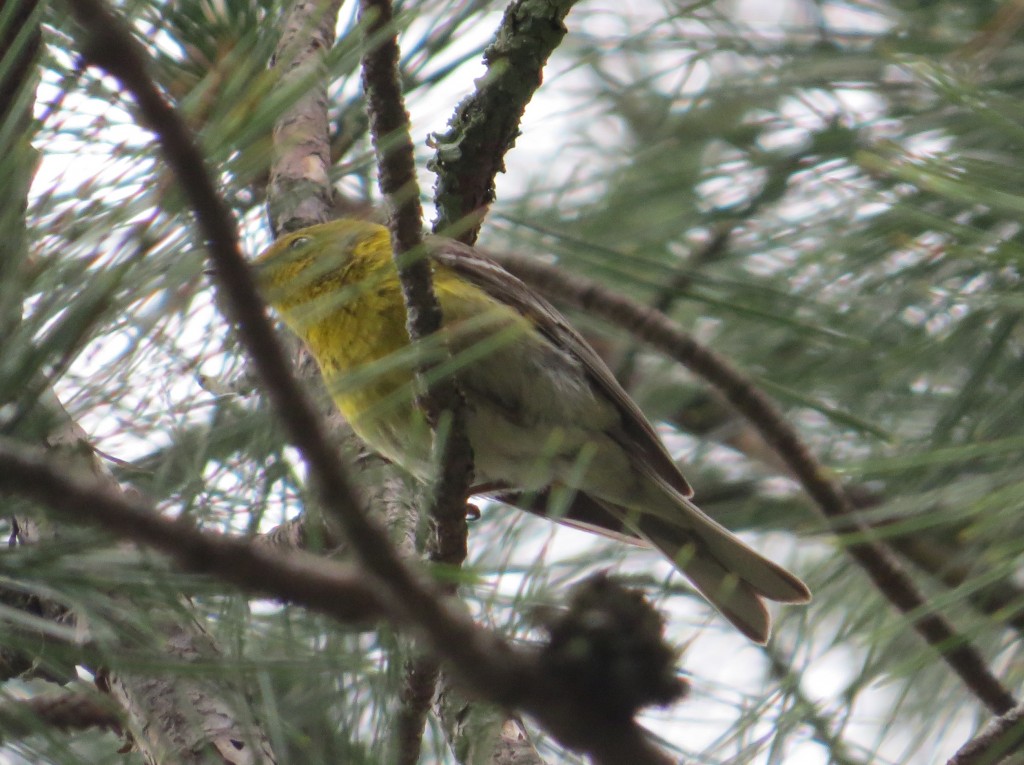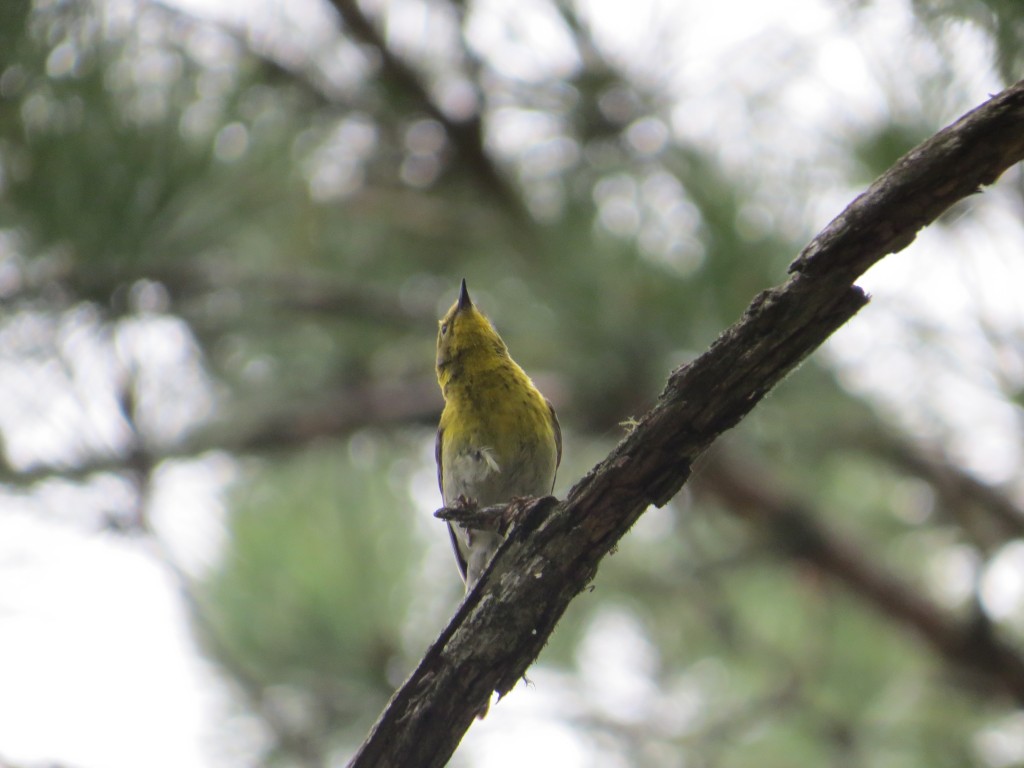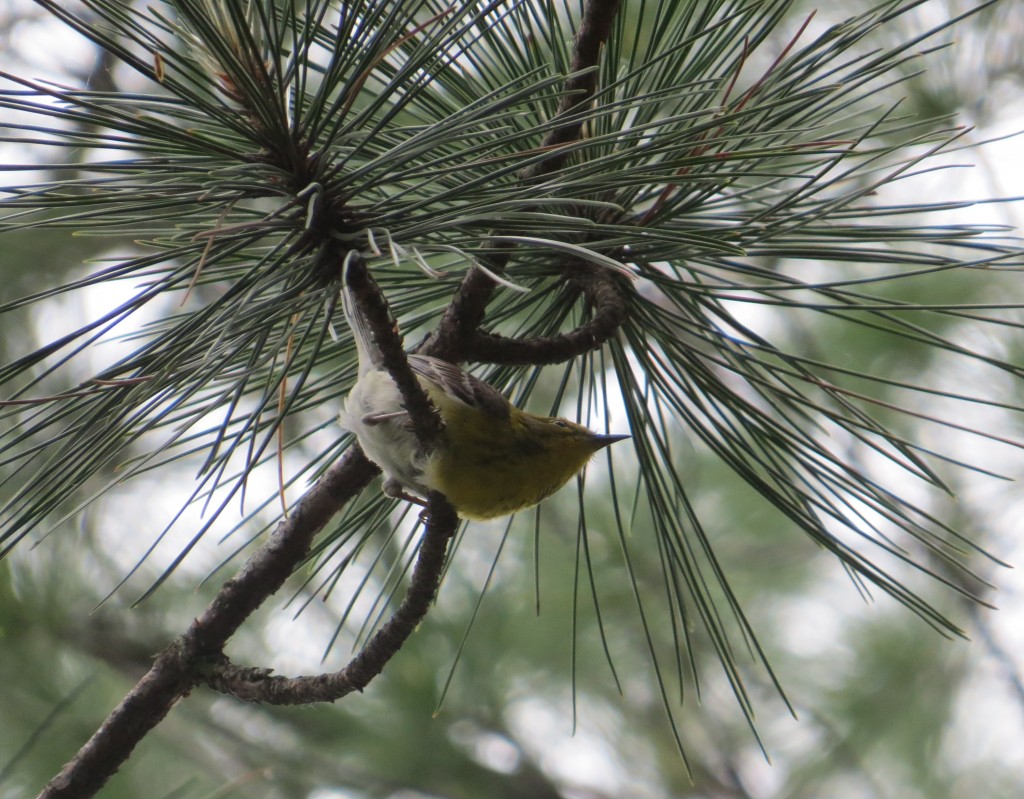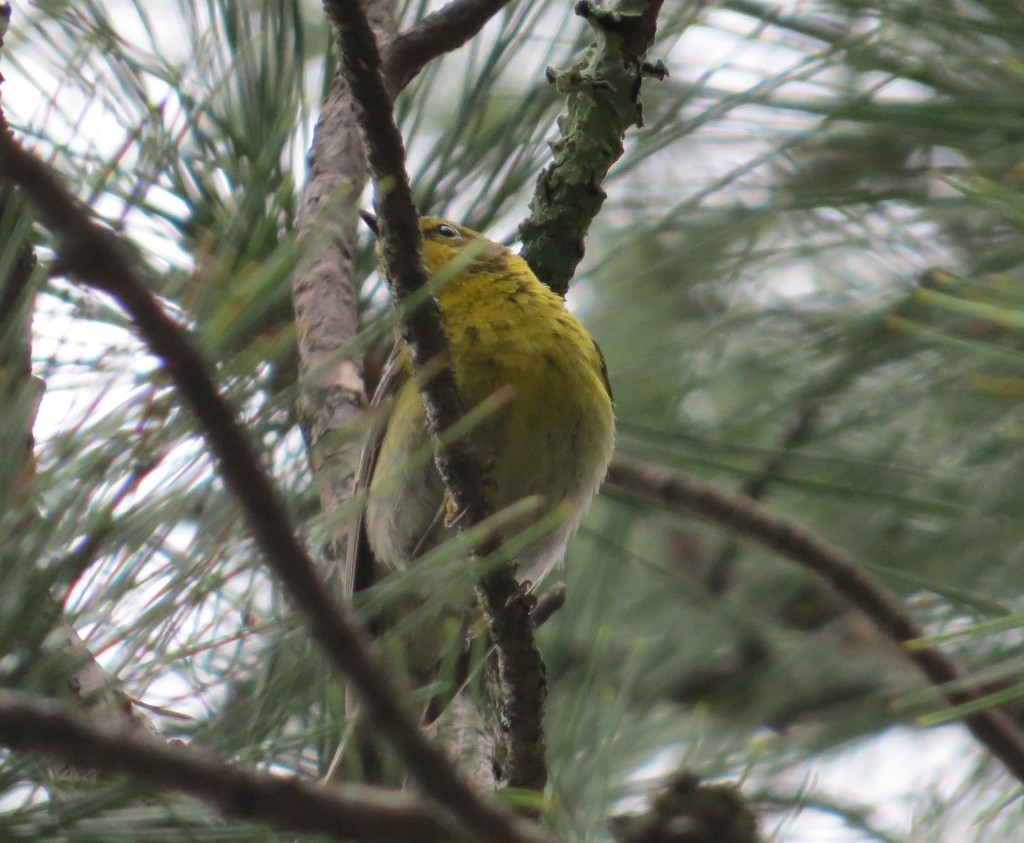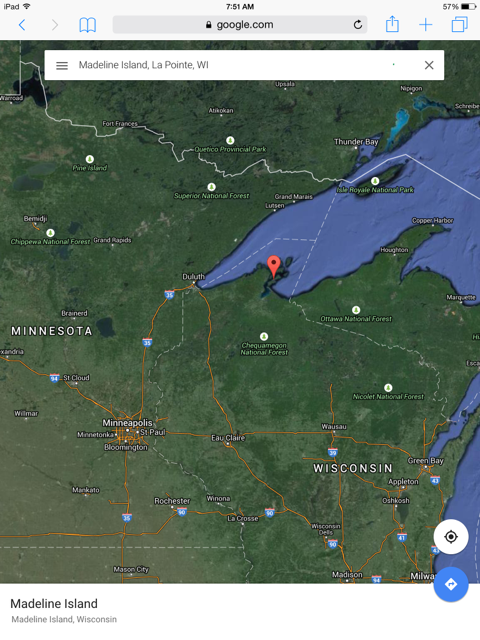
Madeline Island, the largest of the 21 Apostle Islands on Lake Superior’s south shore in Wisconsin, has become a reunion destination where my parents, siblings, and respective families all gather together. Our first trip four years ago was fun and memorable. We had high hopes to repeat those feelings in 2013 on a return trip. But even as we were packing up and getting ready to join the family, Marin came down with a devastating case of Hand, Foot, and Mouth Disease. This disease is both highly contagious and was extremely painful for Marin. With great heartache for all of us, the Madeline Island trip was over before it started. The rest of the extended family went on without us. We stayed home…and moped. We got out birding a little at home and even picked up a couple lifers, but they were pathetic, insufficient consolation prizes. We were wishing we were somewhere else.
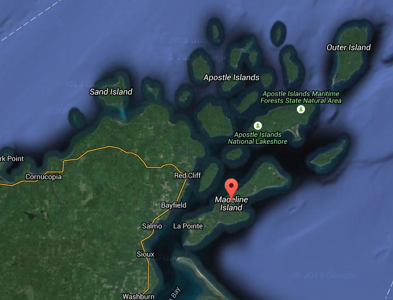
The good news is that it’s not 2013 anymore, and last week we were able to board that ferry to gather once again with family at Madeline Island.
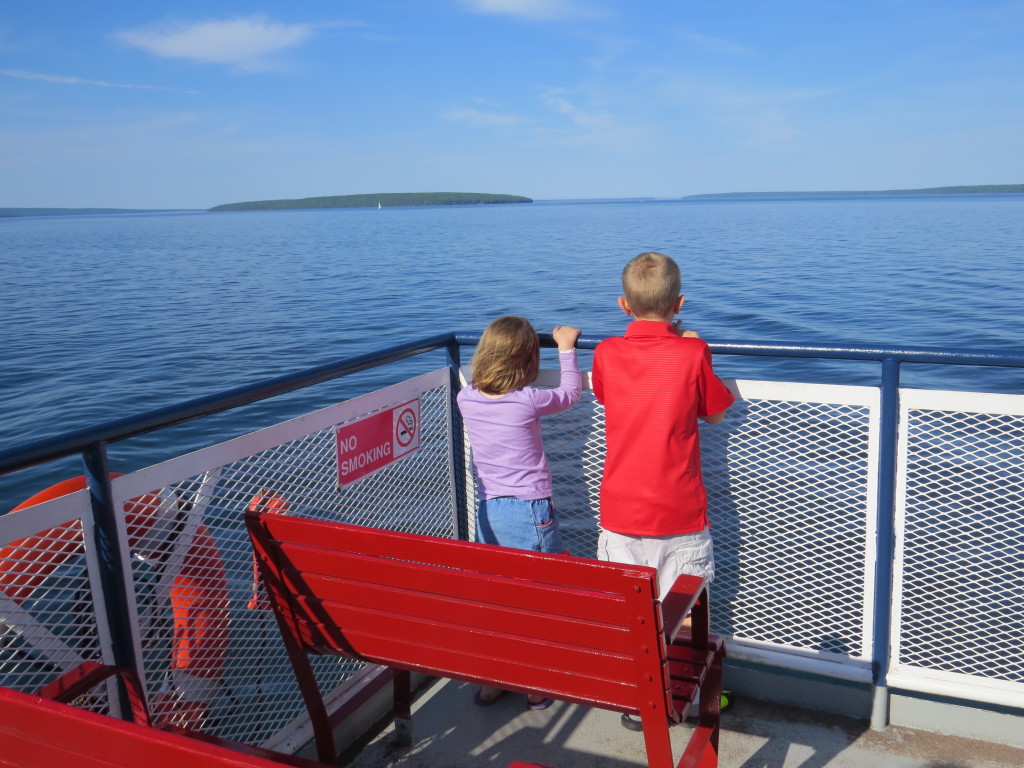
It felt really good to get back to this place–this place of beauty.
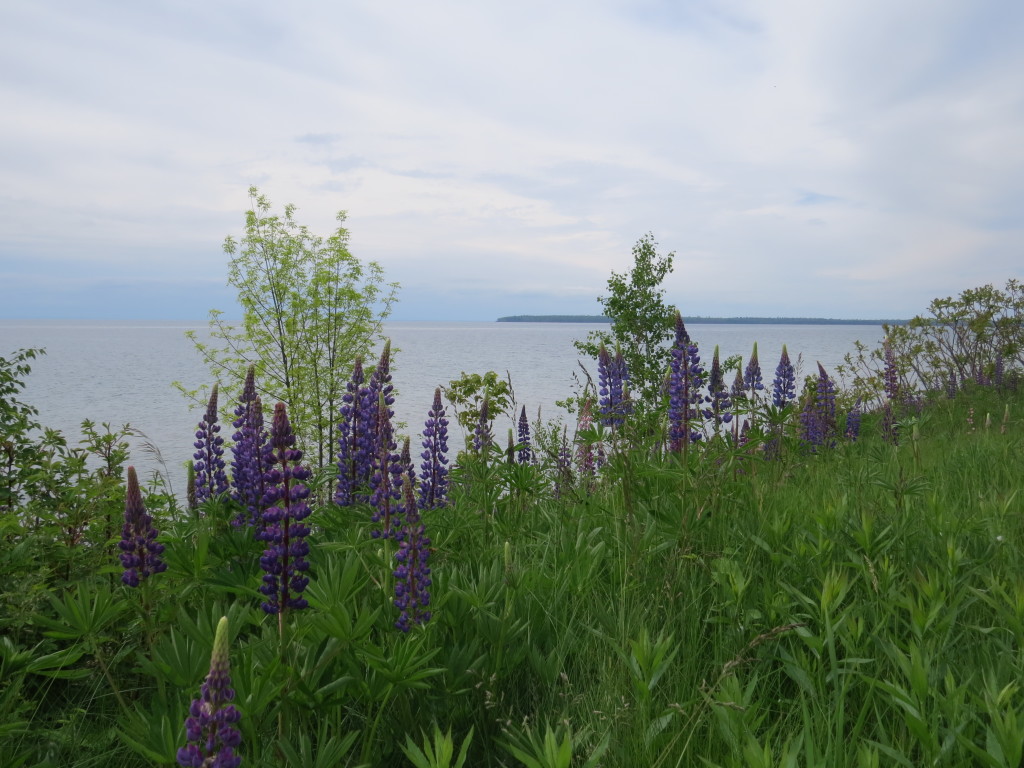
This place of lupine-lined roads.
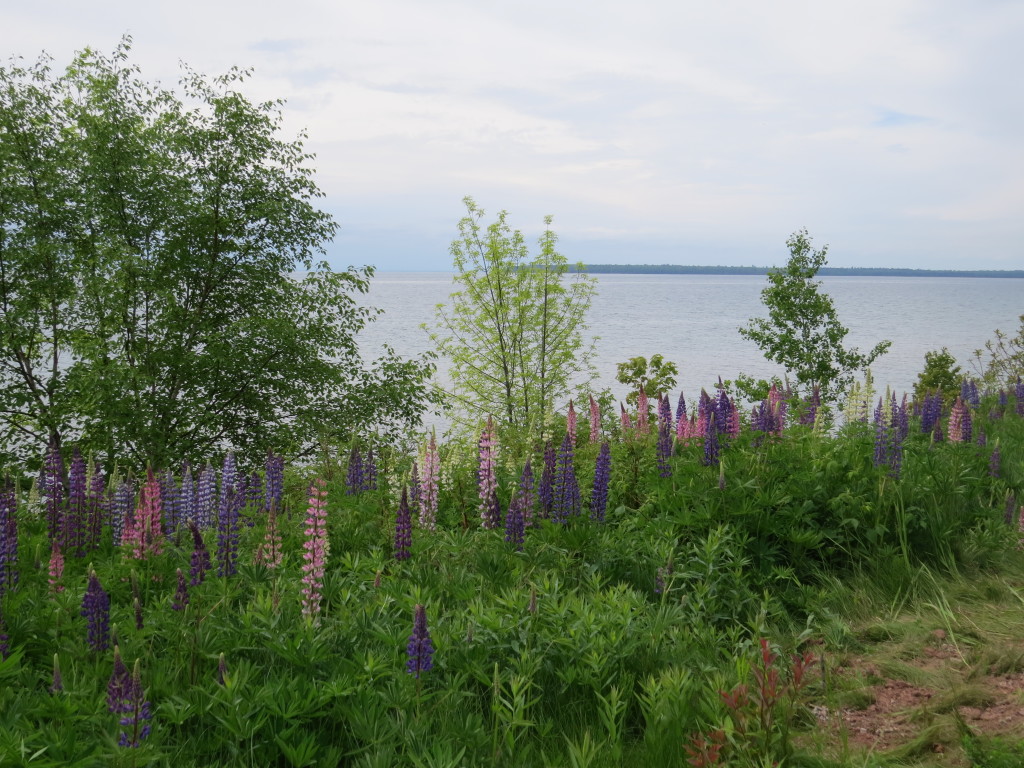
This place of serenity.
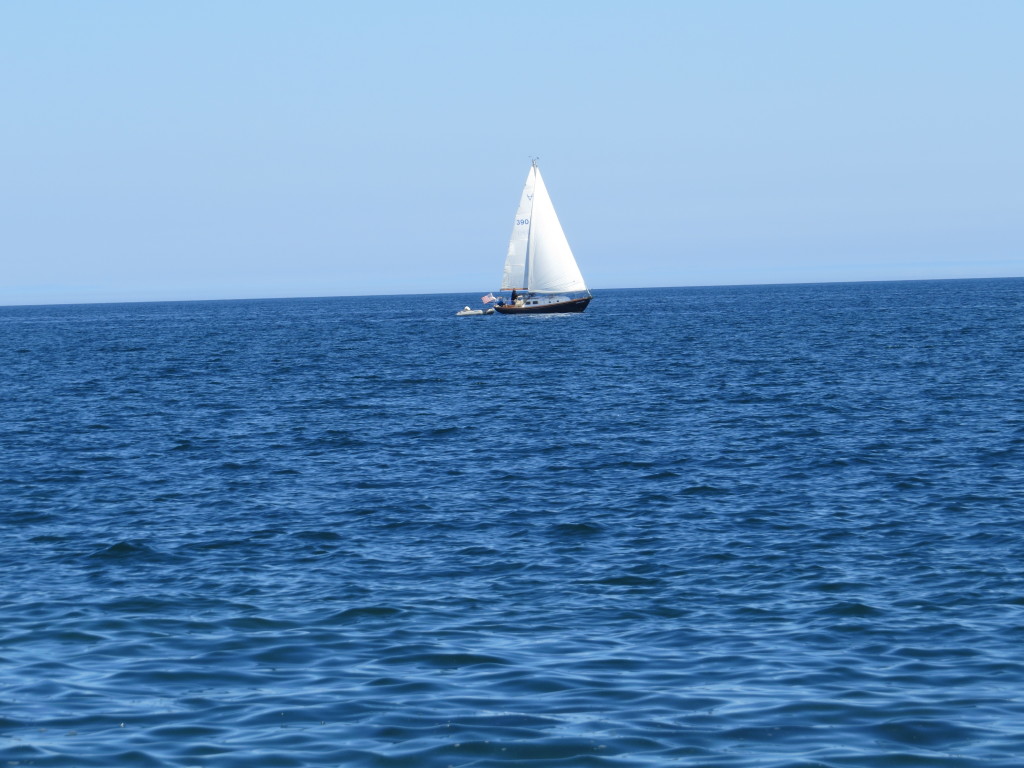 This place of adrenaline.
This place of adrenaline.
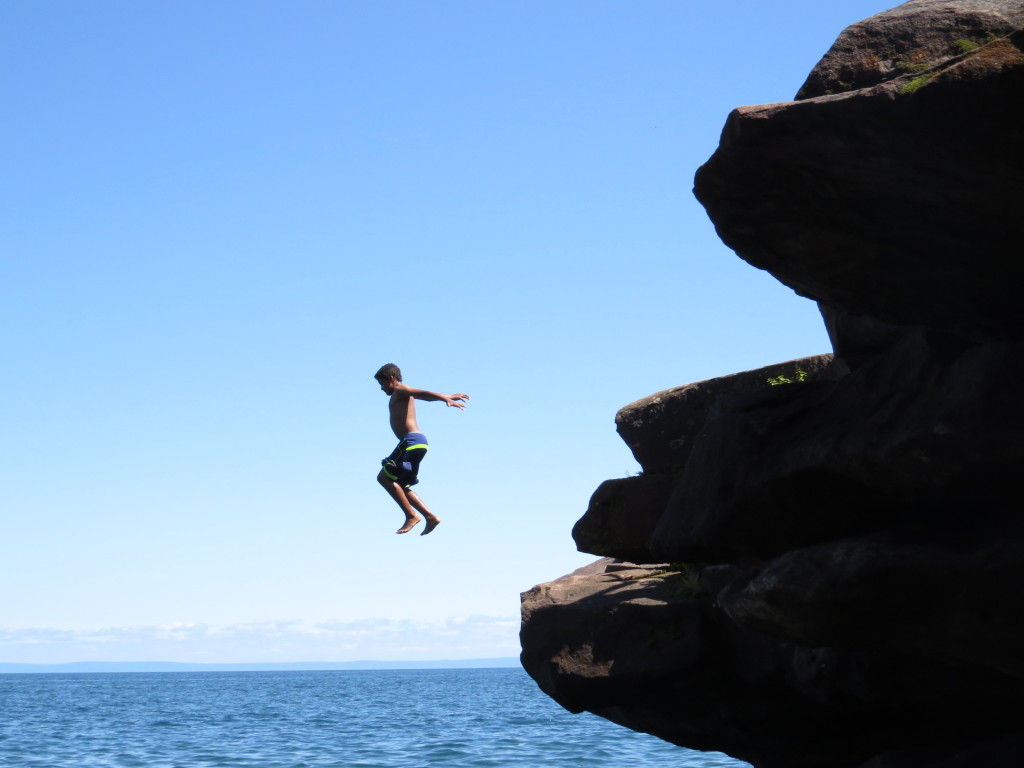
This place where the ice-bucket challenge ain’t got nothin’ on Lake Superior in June.
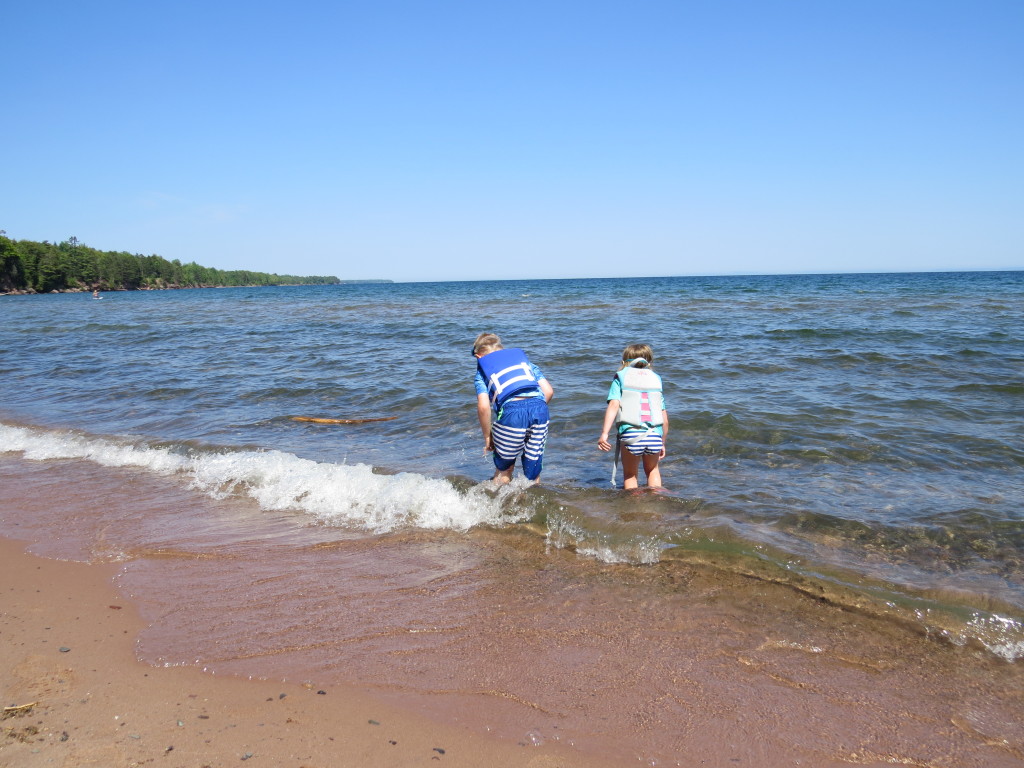
This place of expensive gas.
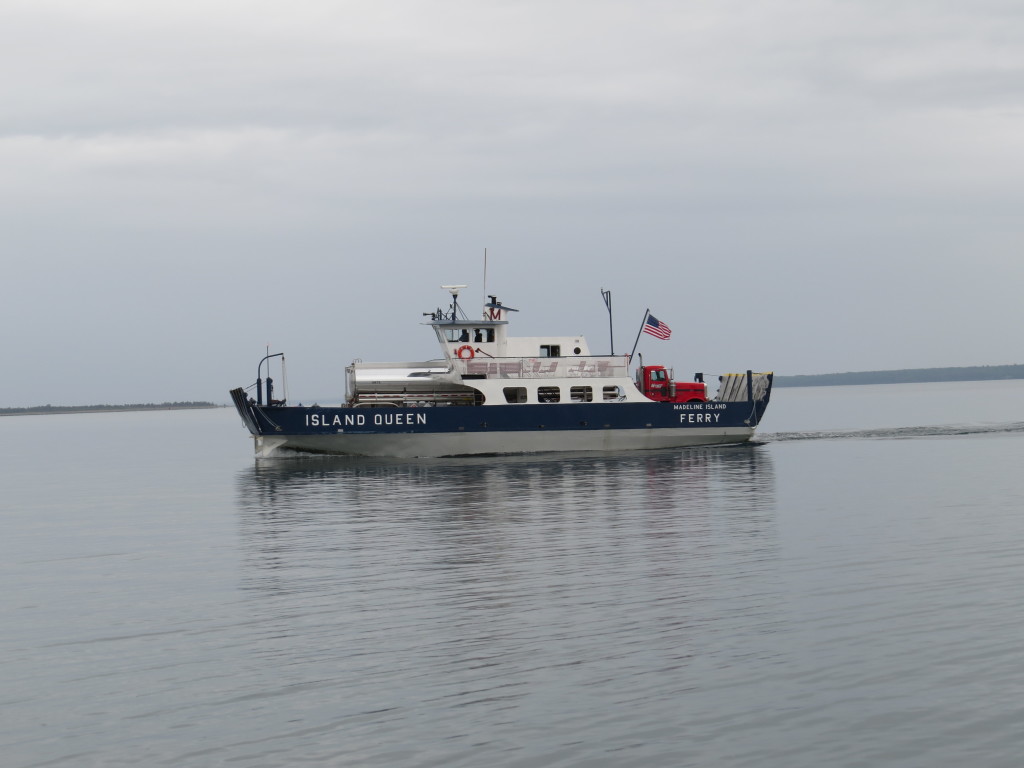
This place of very large, obtrusive Herring Gulls.
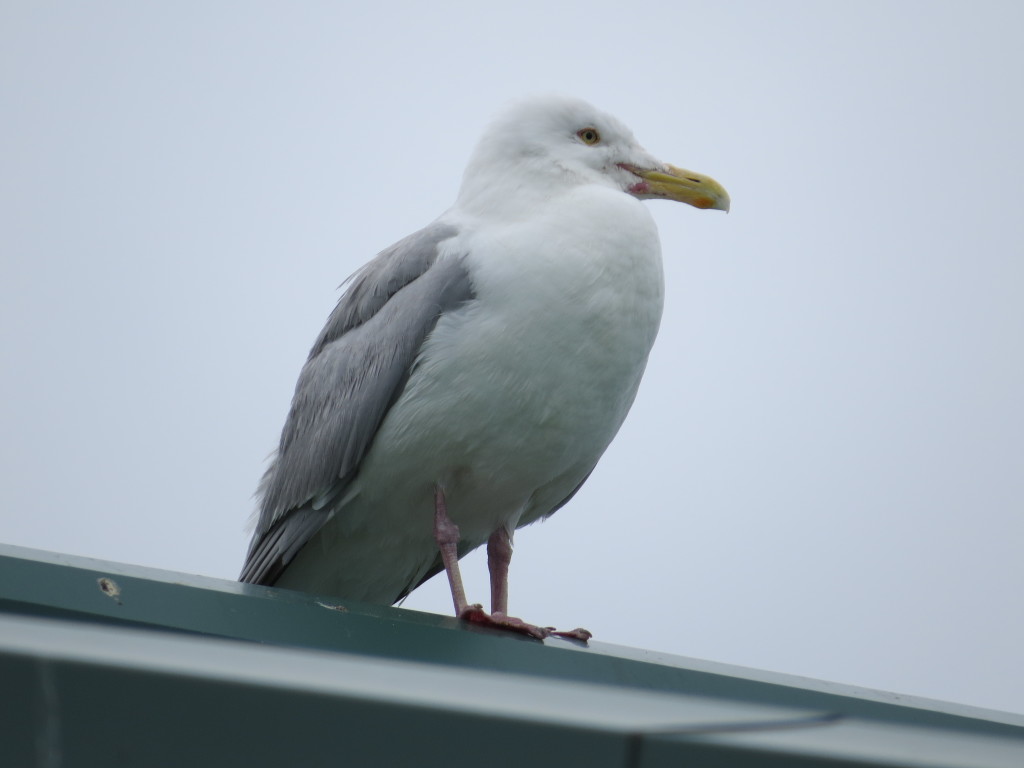
This place of birds who were made to live in Wisconsin.
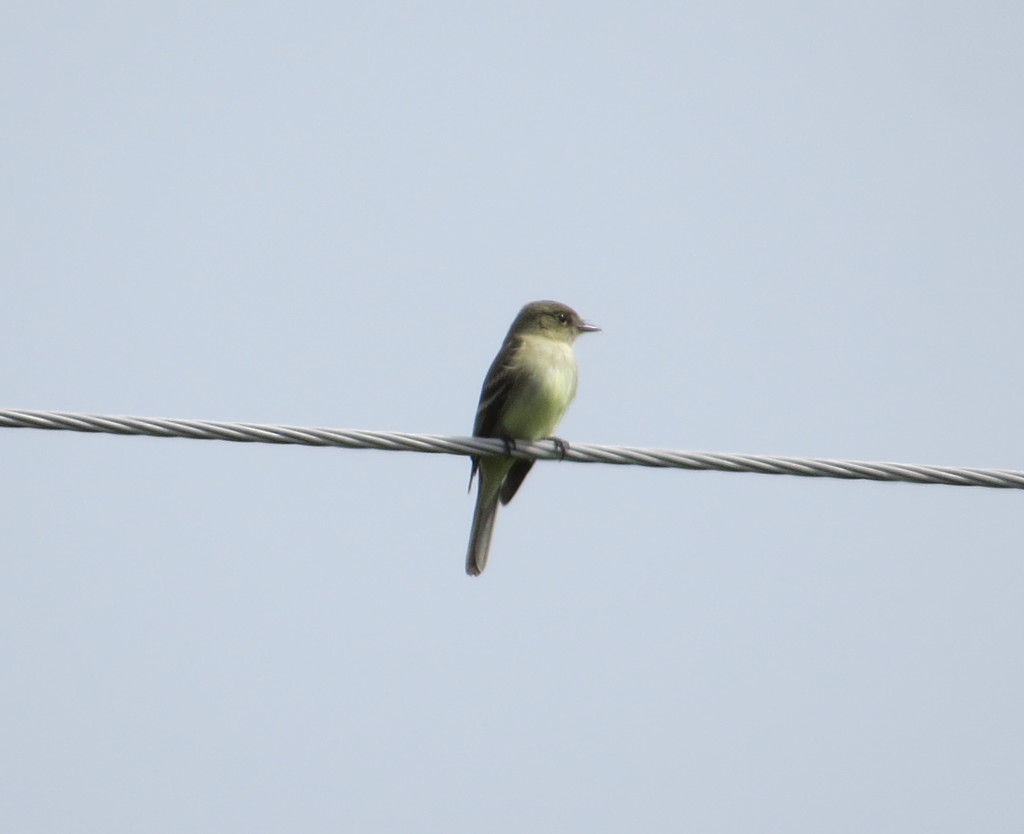
“Free beer!” -Alder Flycatcher
This place of four breeding Catharus species.
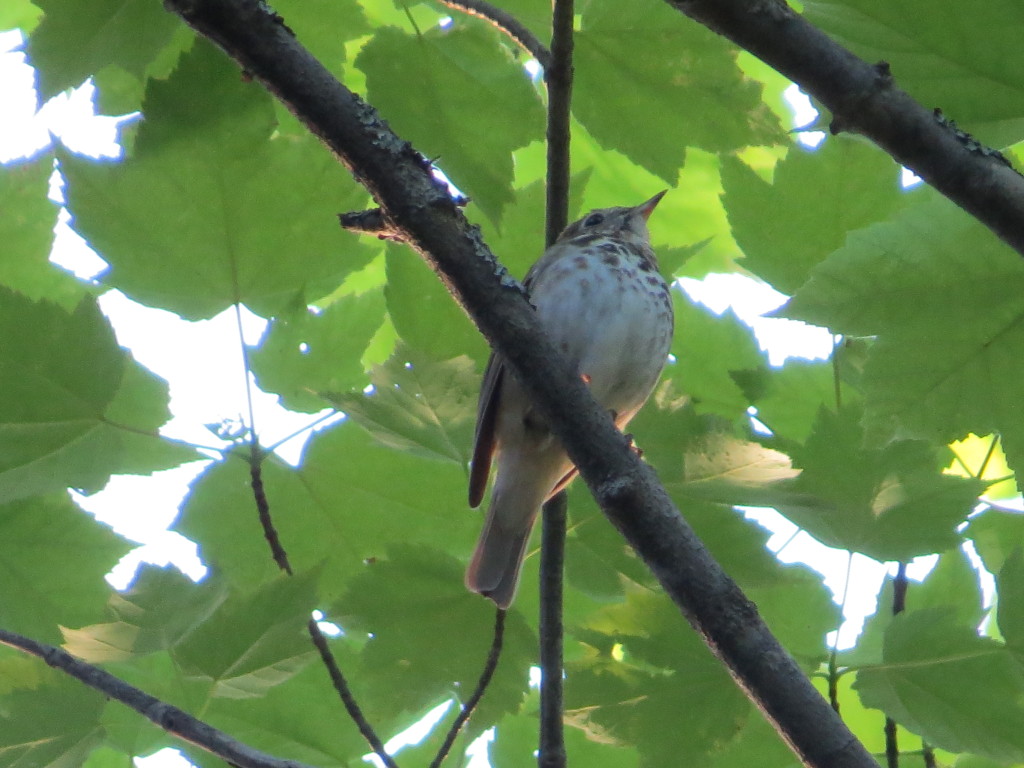
Of the Veery, Wood Thrush, Swainson’s Thrush, and Hermit Thrush that all breed here, the latter three are annoyingly similar-sounding. I thought I had a Wood Thrush when Melissa finally helped me get visuals on this Hermit. I’ve only ever had to learn the WOTH song as that’s our only breeder of the three in west-central MN.
This place that Sandhill Cranes call home.
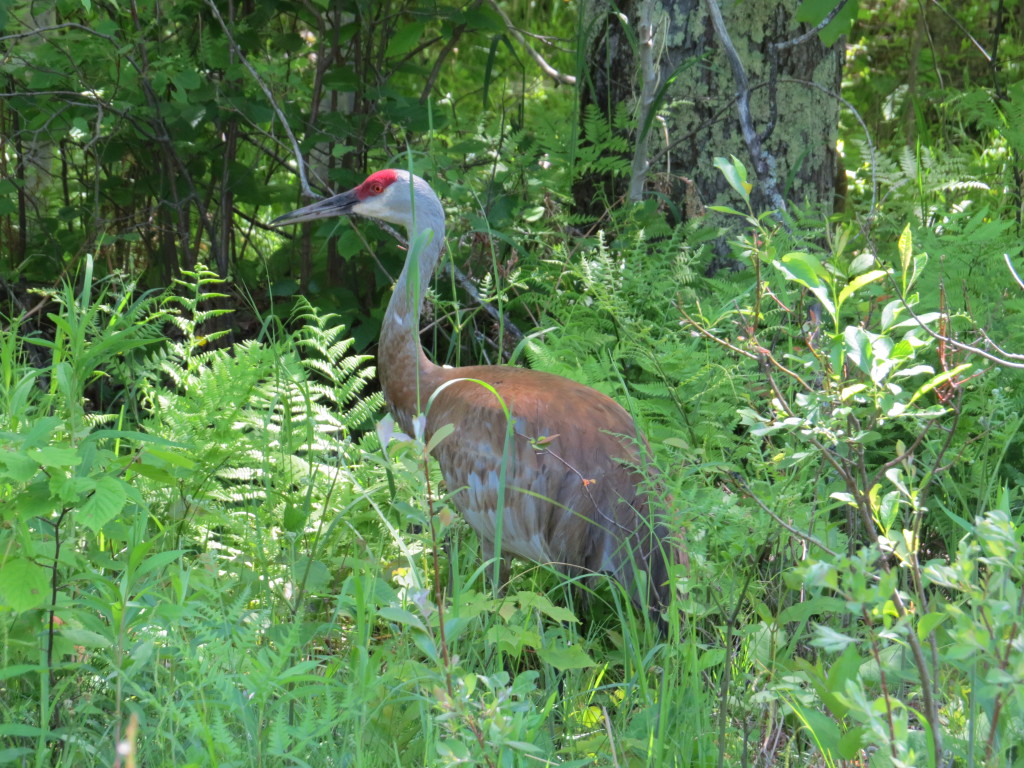
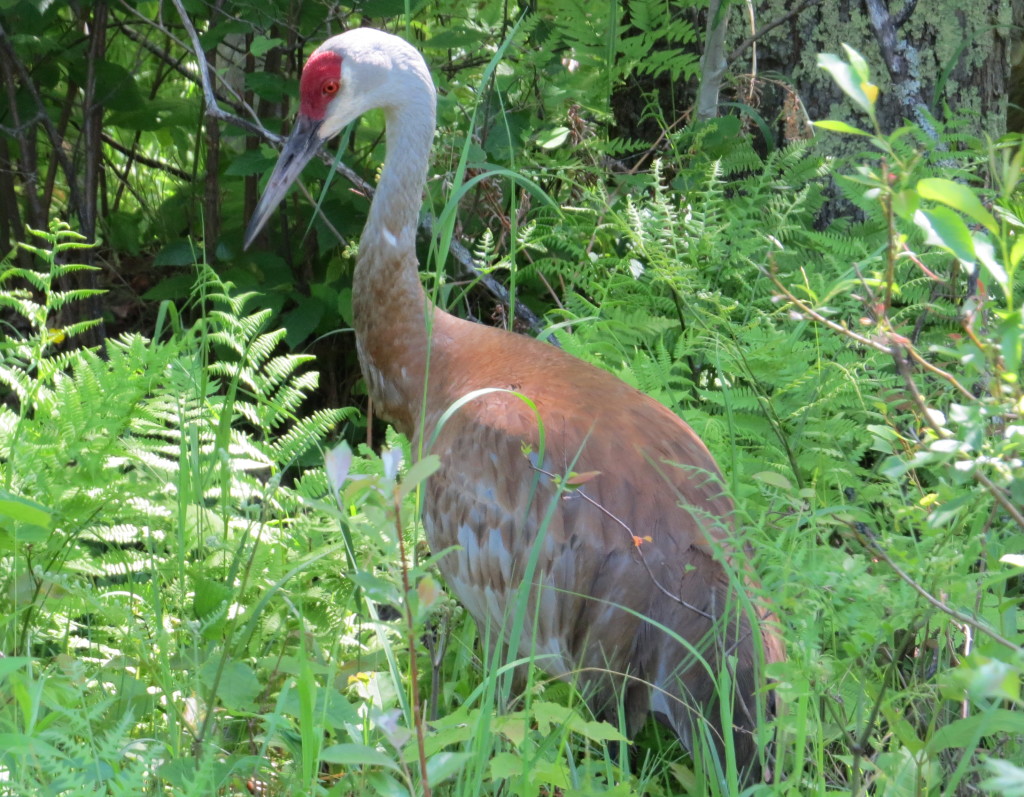
And raise babies.
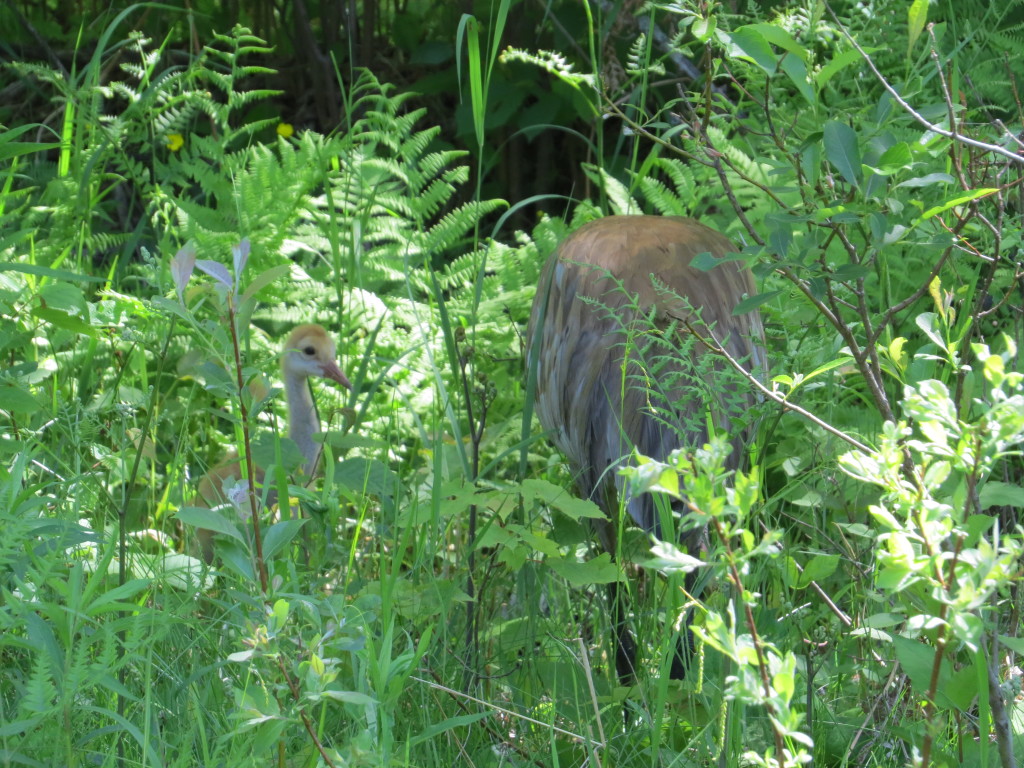
But for me, this is a place of photo redemption for many bird species. I saw birds and crushed birds that I have never seen well before, photographed at all, or crushed. Common Raven is of the latter-most category.
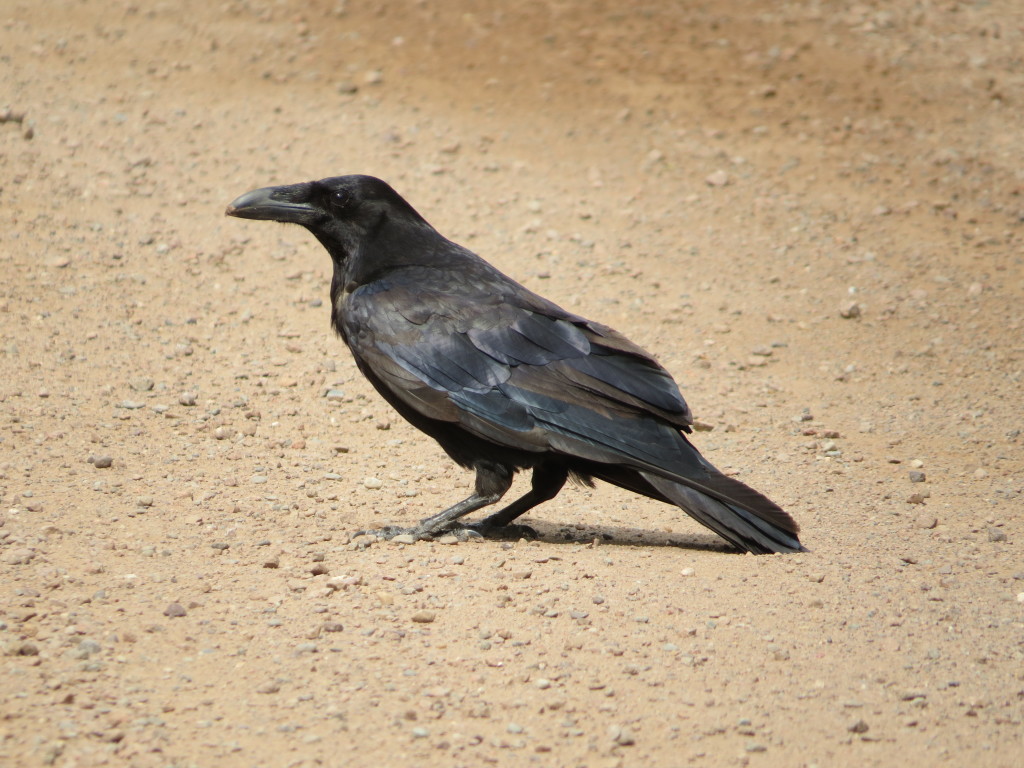
The very common Double-crested Cormorant is finally making its long overdue debut on ABWCH.
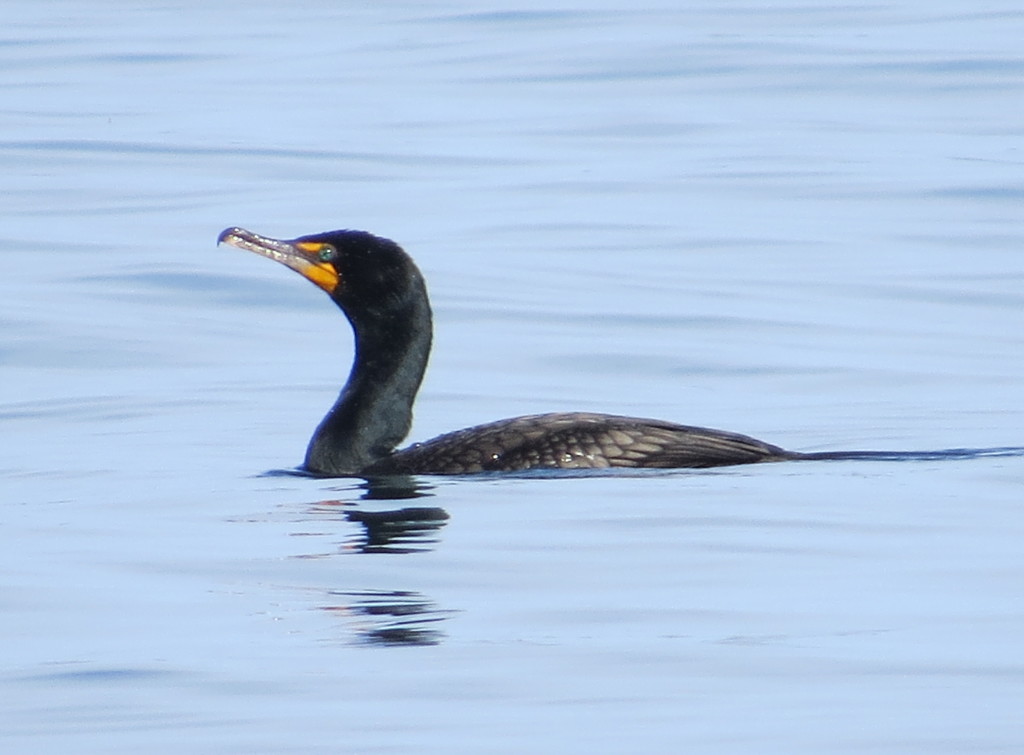
Contrary to what I’d thought my whole life, DCCO are actually kind of cool-looking.
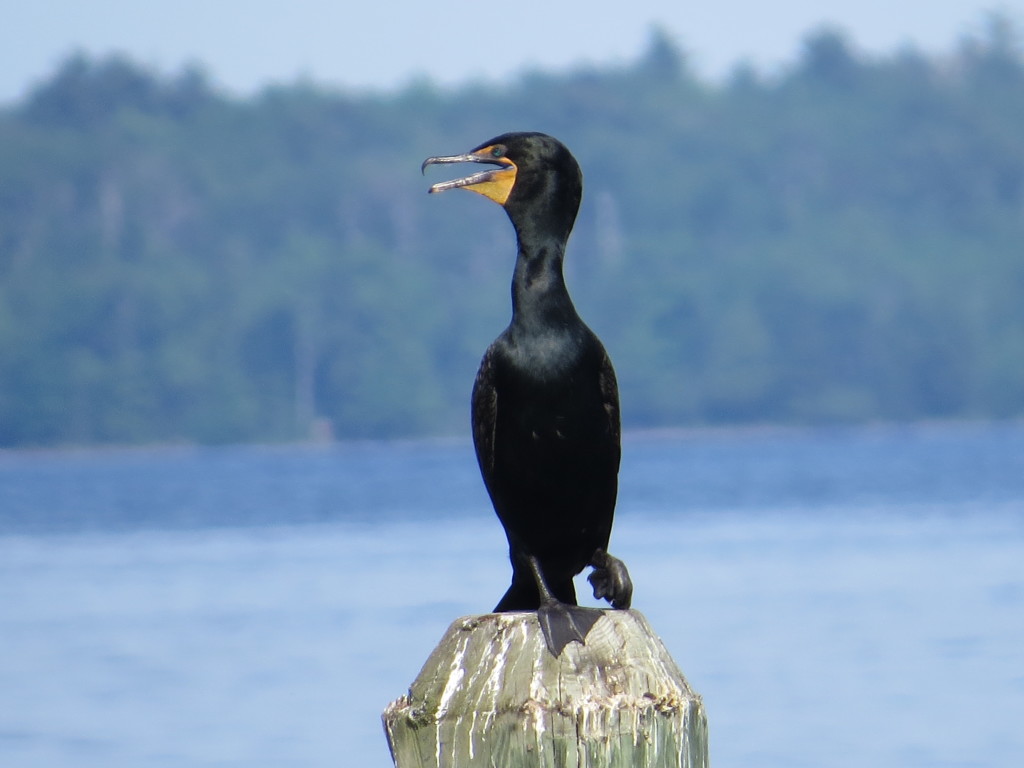
One bird, which has the best sound of the northwoods, I have heard a few times and seen briefly once. On this trip to Madeline Island, I have now seen the Winter Wren well while it sang. Truly, this was one of my highlights of the MI trip, a trip that even included seeing an endangered species lifer.
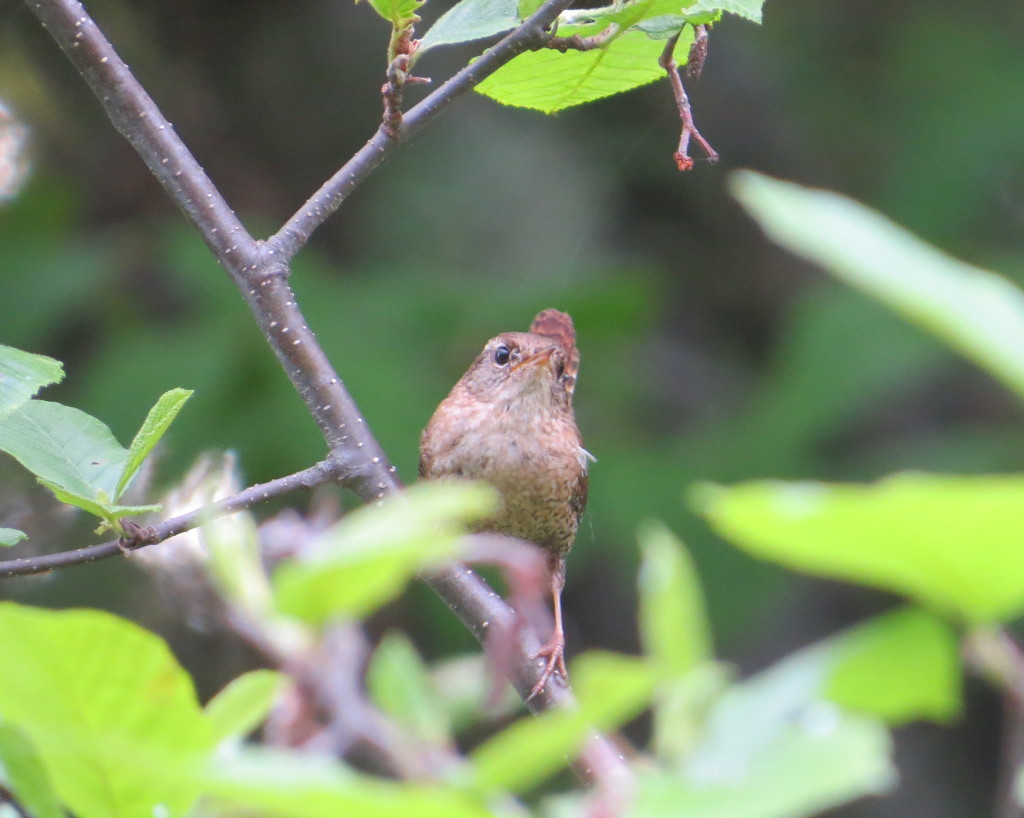
Don’t know the song? Listen to it right now; this is the Information Age after all. #beatsanywarbler
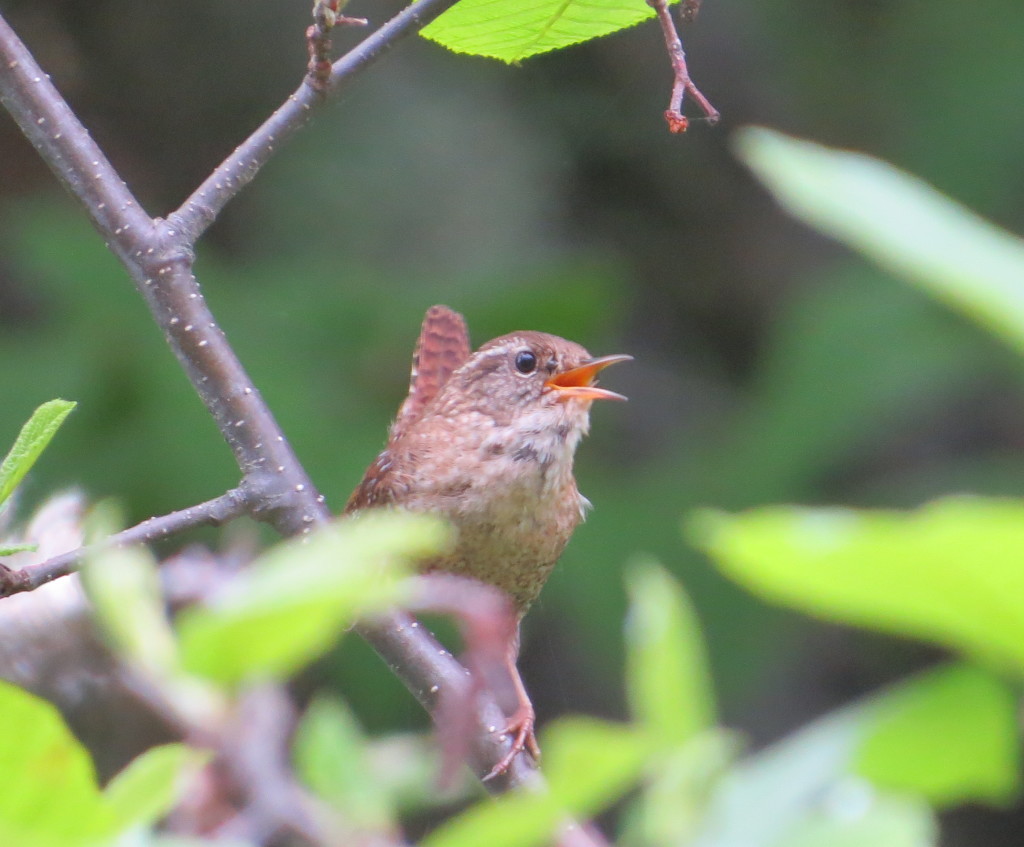 I’m human, I make mistakes. Awhile back I prematurely declared on this blog that Canyon Wren is the best Wren. I now retract that statement. Sorry, AZ friends, but I’m declaring WIWR the best Wren now.
I’m human, I make mistakes. Awhile back I prematurely declared on this blog that Canyon Wren is the best Wren. I now retract that statement. Sorry, AZ friends, but I’m declaring WIWR the best Wren now.
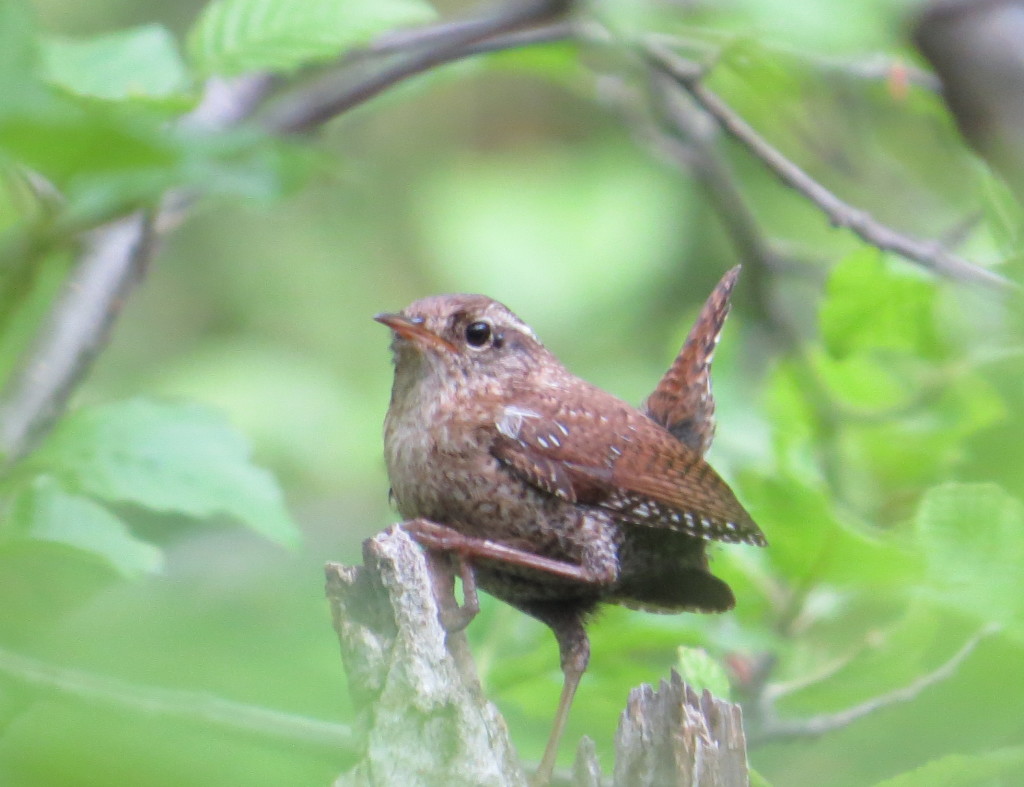
Finally seeing the little ball of chocolate and seeing it well, coupled with the incredible song, wooed me.
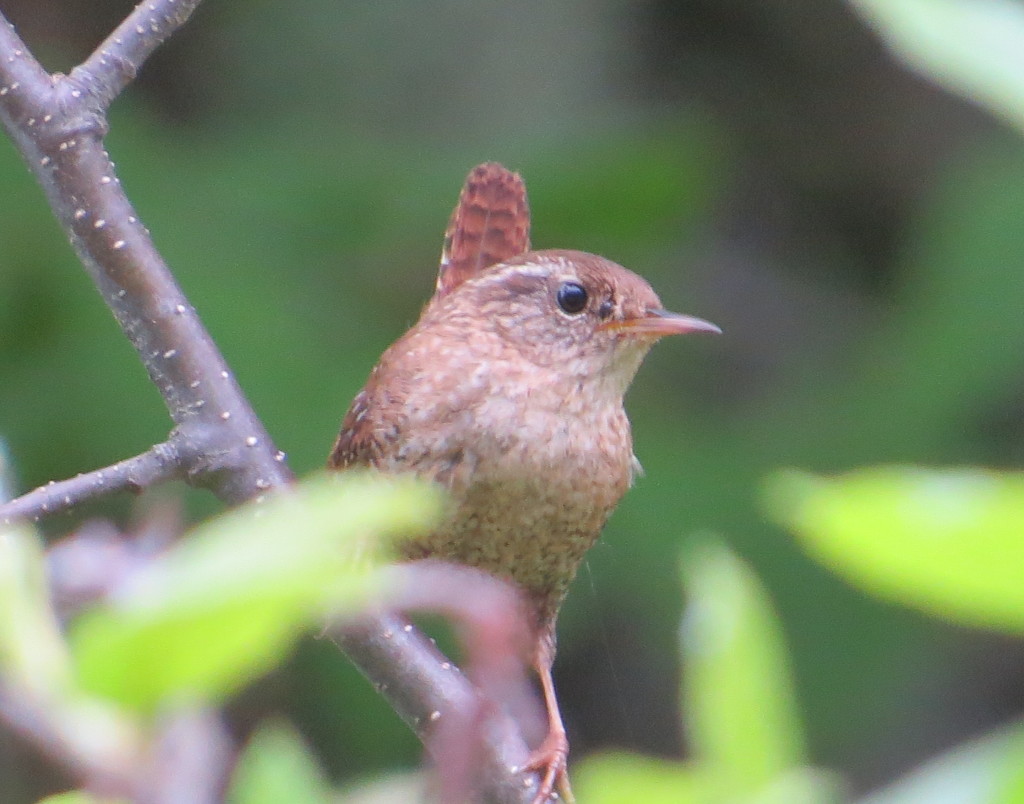 The WIWR was a huge highlight, but perhaps even more thrilling because of the bird’s vibrant colors was finding a Mourning Warbler. Unlike the Wren, I have seen MOWA well before but always briefly, certainly never long enough to photograph. That changed on this trip.
The WIWR was a huge highlight, but perhaps even more thrilling because of the bird’s vibrant colors was finding a Mourning Warbler. Unlike the Wren, I have seen MOWA well before but always briefly, certainly never long enough to photograph. That changed on this trip.
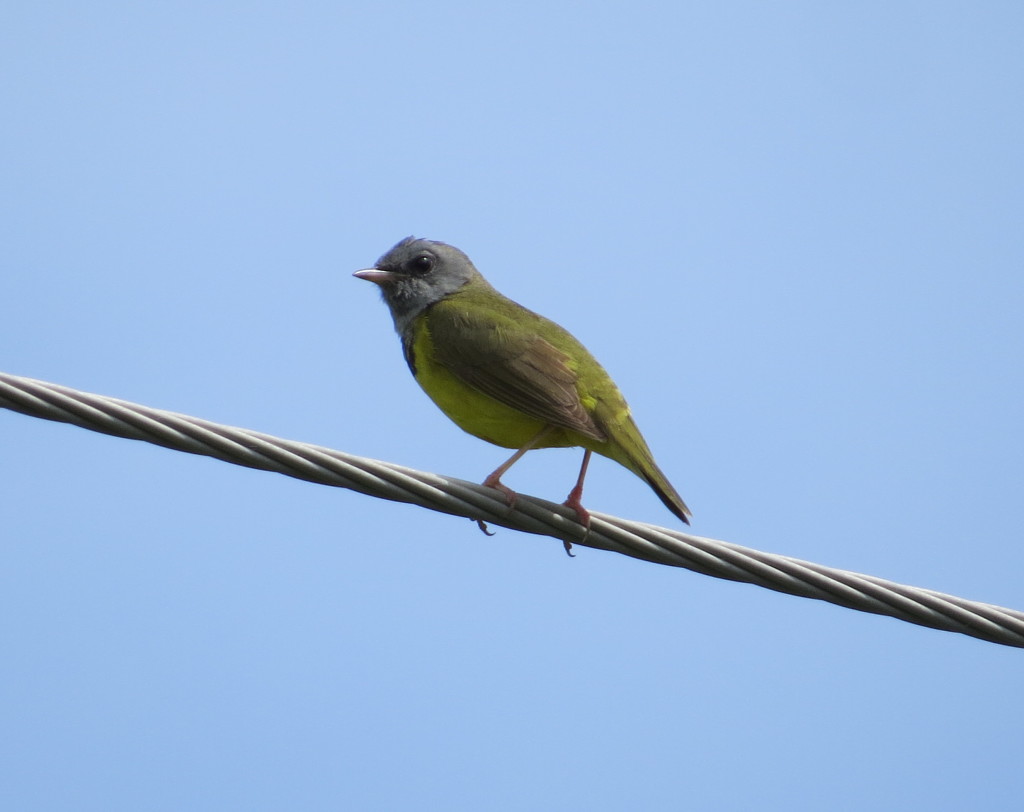
By the way, who’s ever heard of a Warbler perching on a wire?
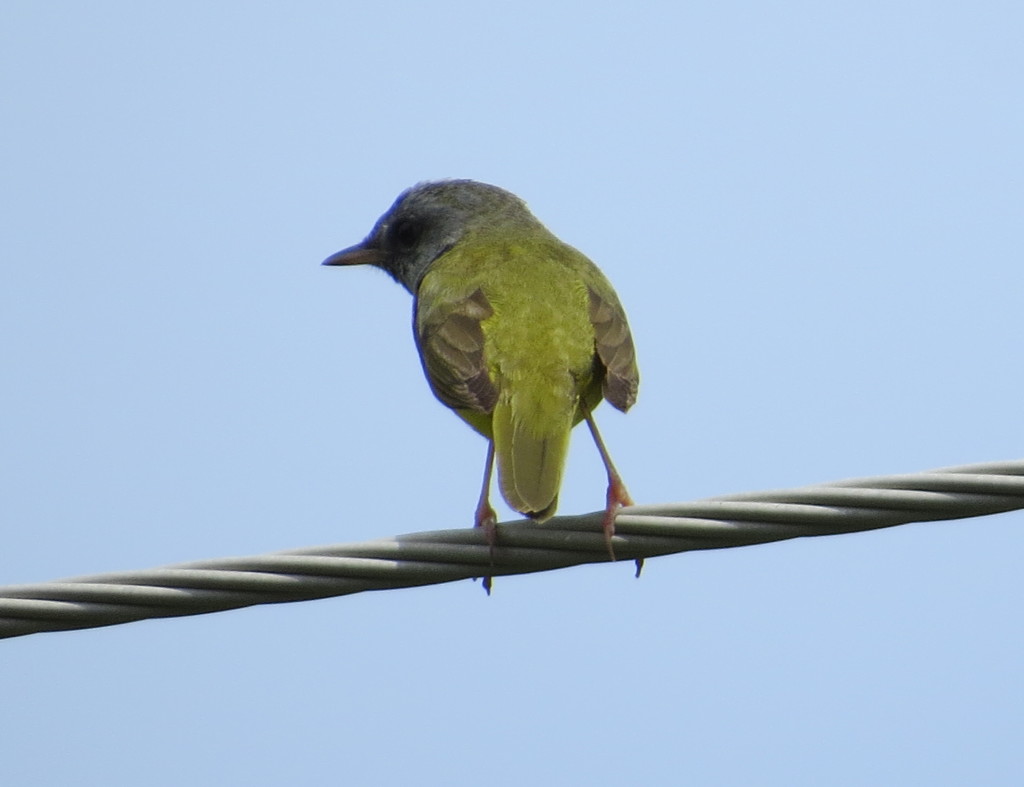
Sometimes, to get the full effect of a Mourning Warbler’s colors, you need a stunt-double, a second bird. A much, much, much more cooperative bird and the only other MOWA I found on the island.
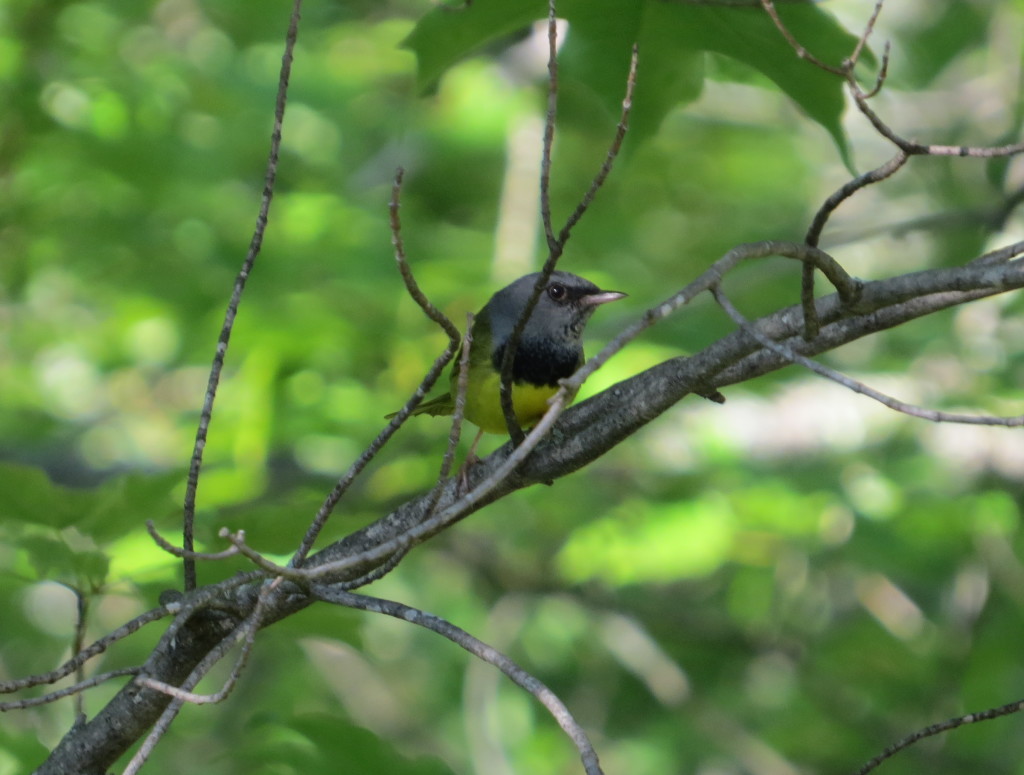
The Mourning Warbler gets its name from its black bib–a symbol of mourning.
Previously I’ve only ever managed one head-less photo of a Mourning Warbler. Therefore, this photo session felt sooooo good.
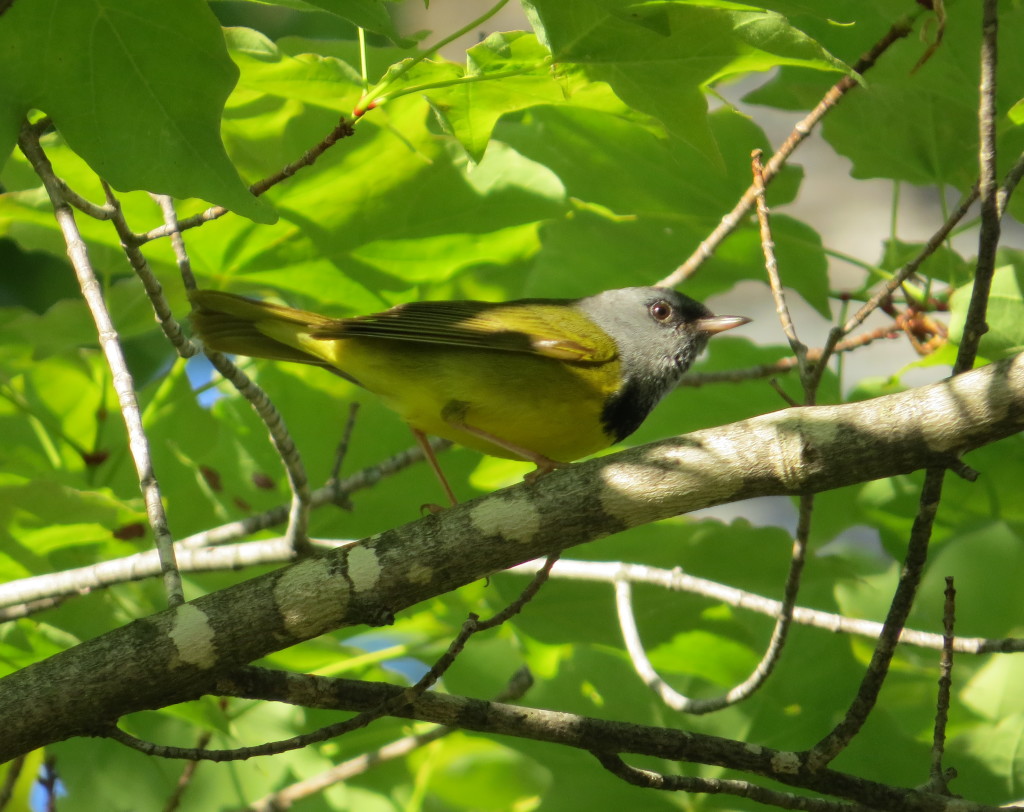
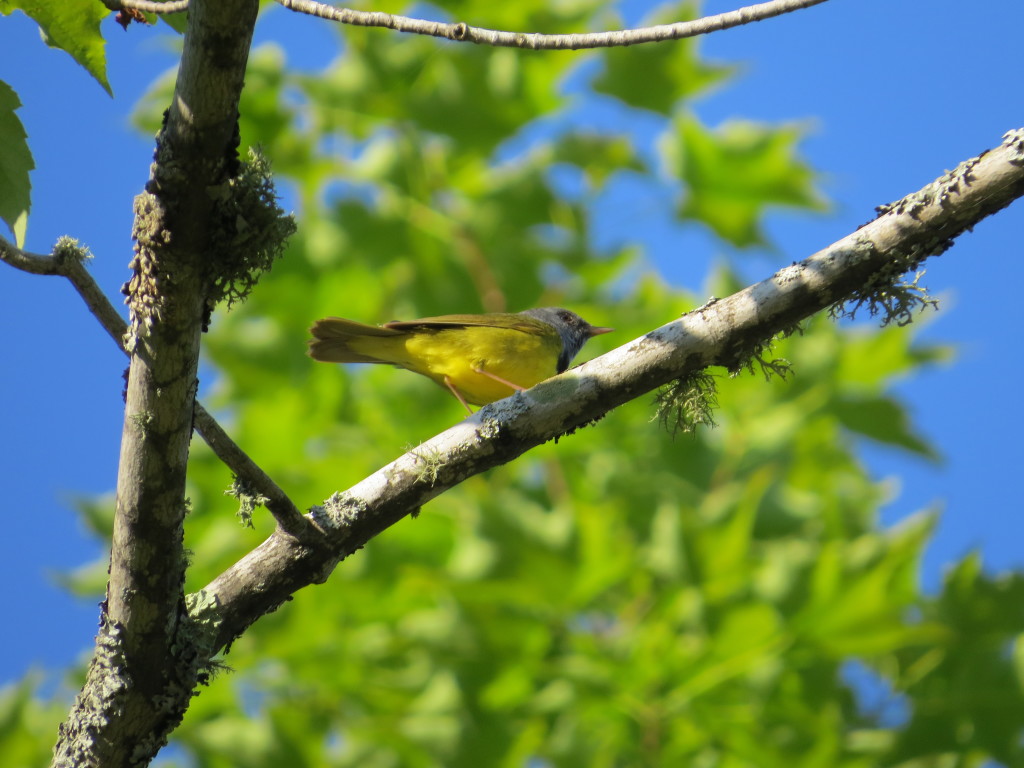
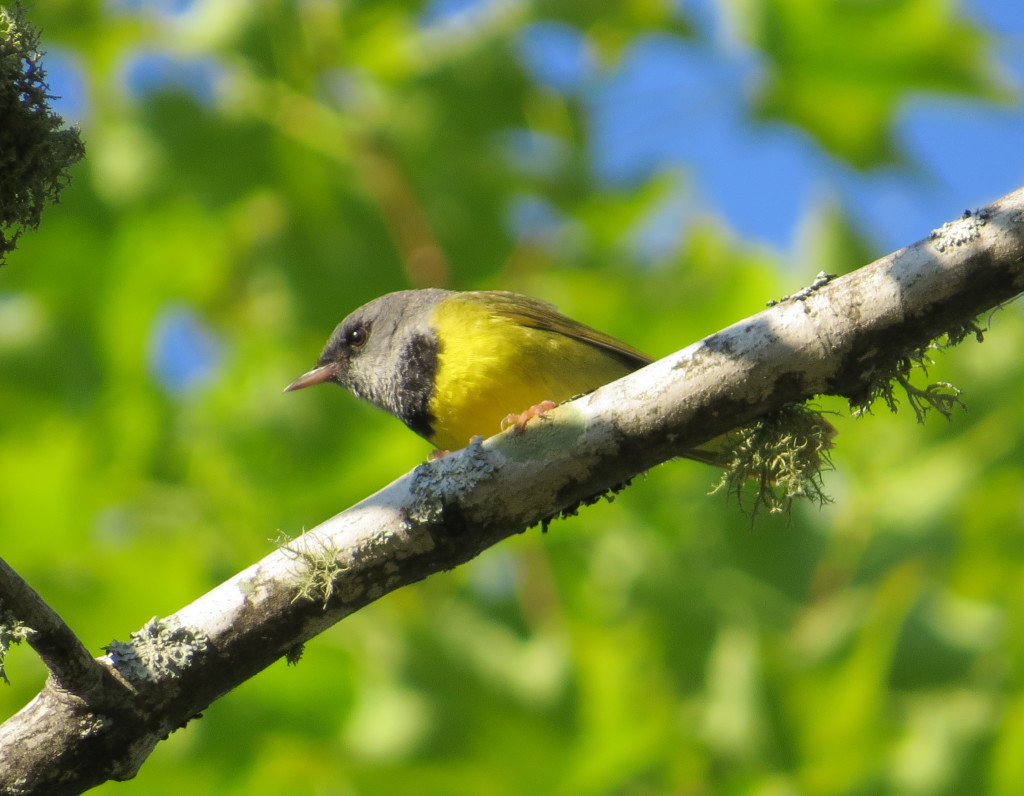 It felt good to get back to the island…so good after the disappointment of 2013. The last time I was at Madeline Island in 2011 I wasn’t even a birder. I didn’t even know what a Warbler was. This return to MI was incredible in many regards, but especially for seeing birds and photographing them. For the next post I honestly can’t decide what to share with you first–the high seas outing to get an endangered species lifer or the meatiest, crushiest mega-Warbler post I’ve ever done. Wait and see, I guess.
It felt good to get back to the island…so good after the disappointment of 2013. The last time I was at Madeline Island in 2011 I wasn’t even a birder. I didn’t even know what a Warbler was. This return to MI was incredible in many regards, but especially for seeing birds and photographing them. For the next post I honestly can’t decide what to share with you first–the high seas outing to get an endangered species lifer or the meatiest, crushiest mega-Warbler post I’ve ever done. Wait and see, I guess.

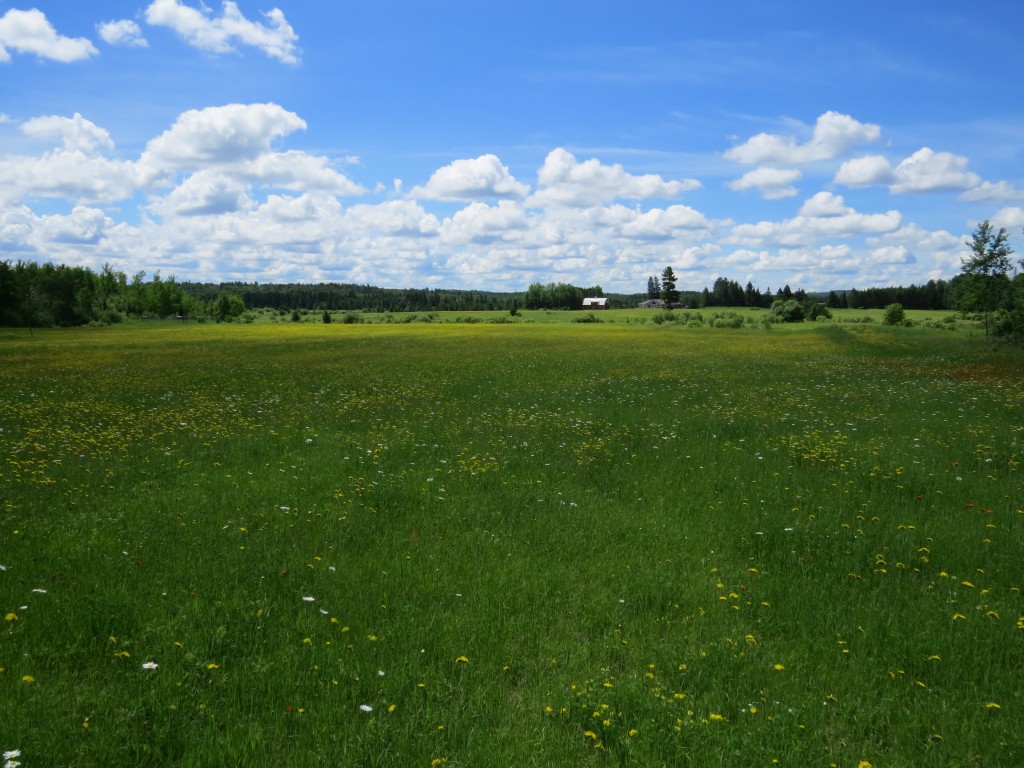
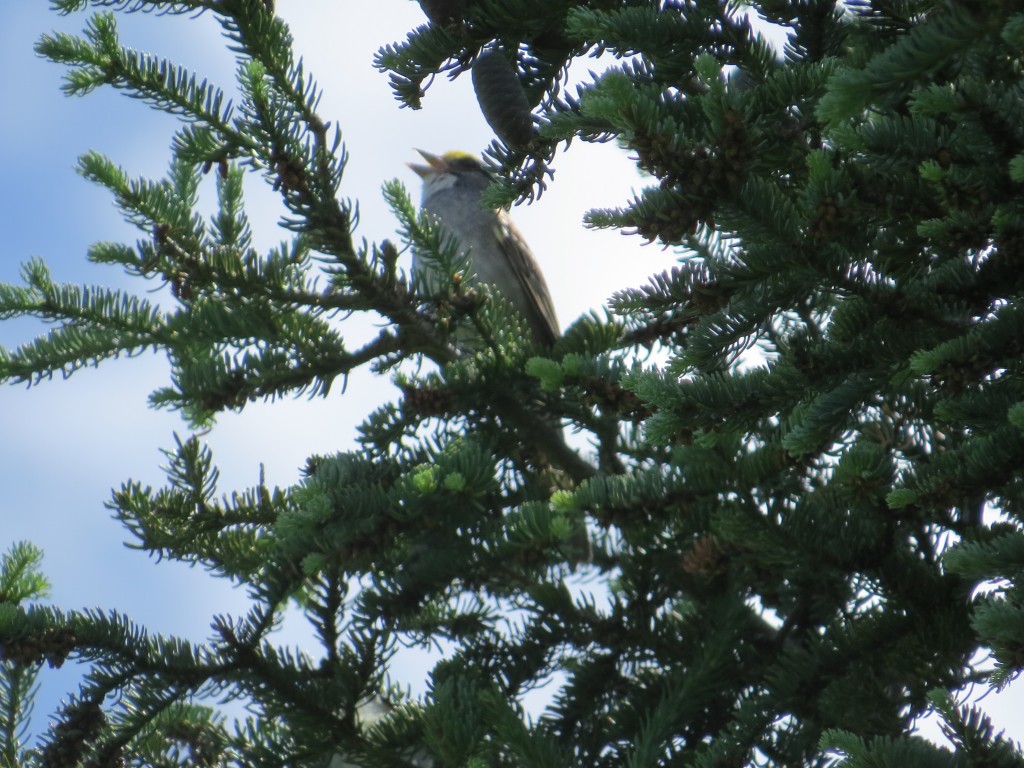
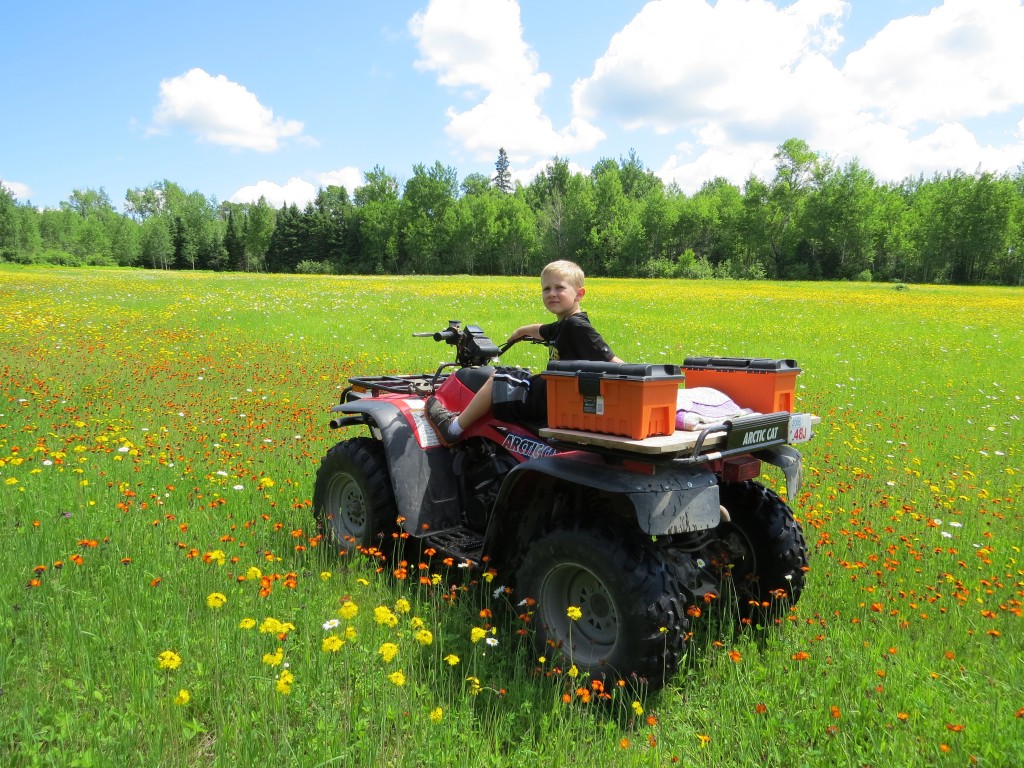
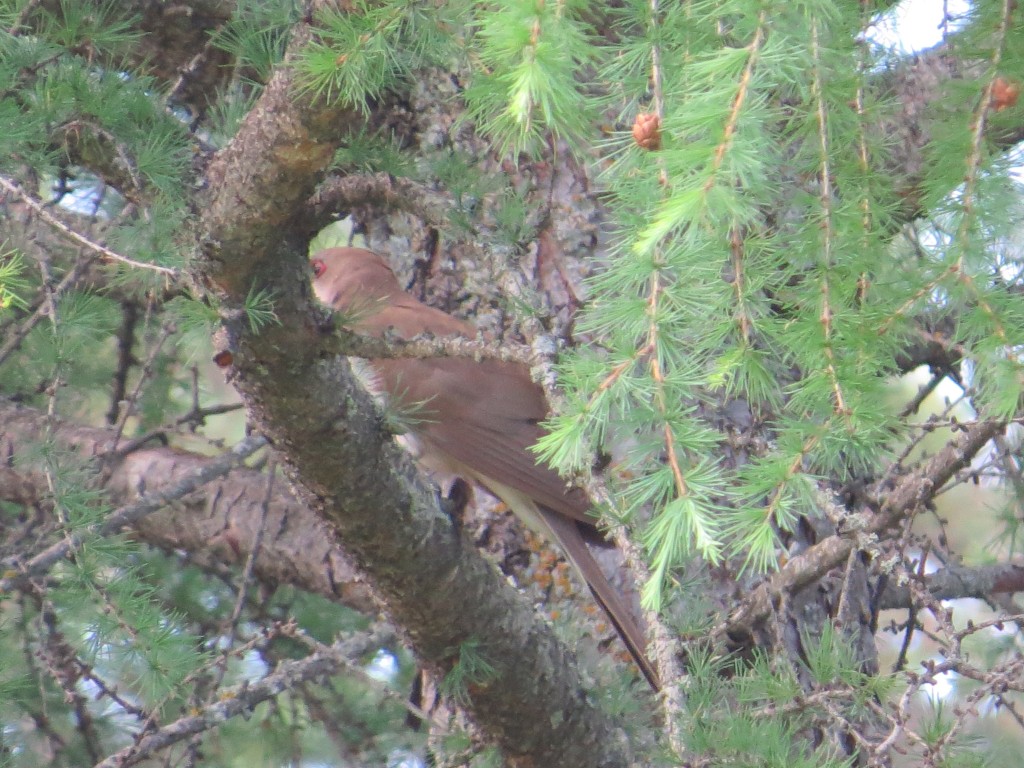
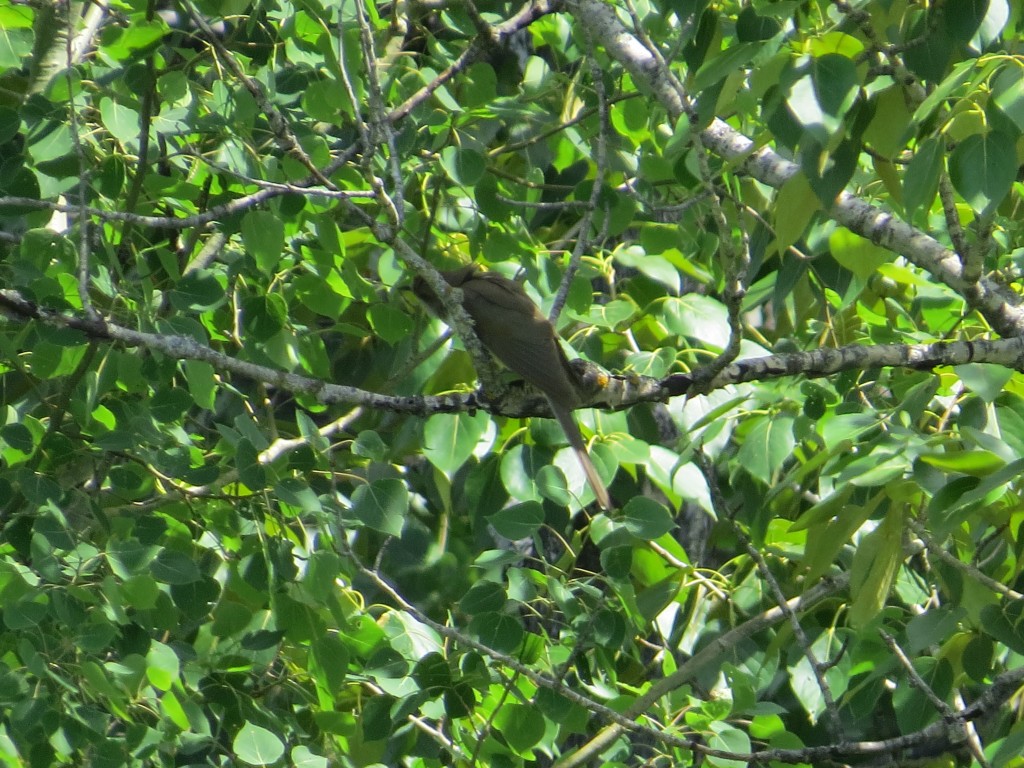
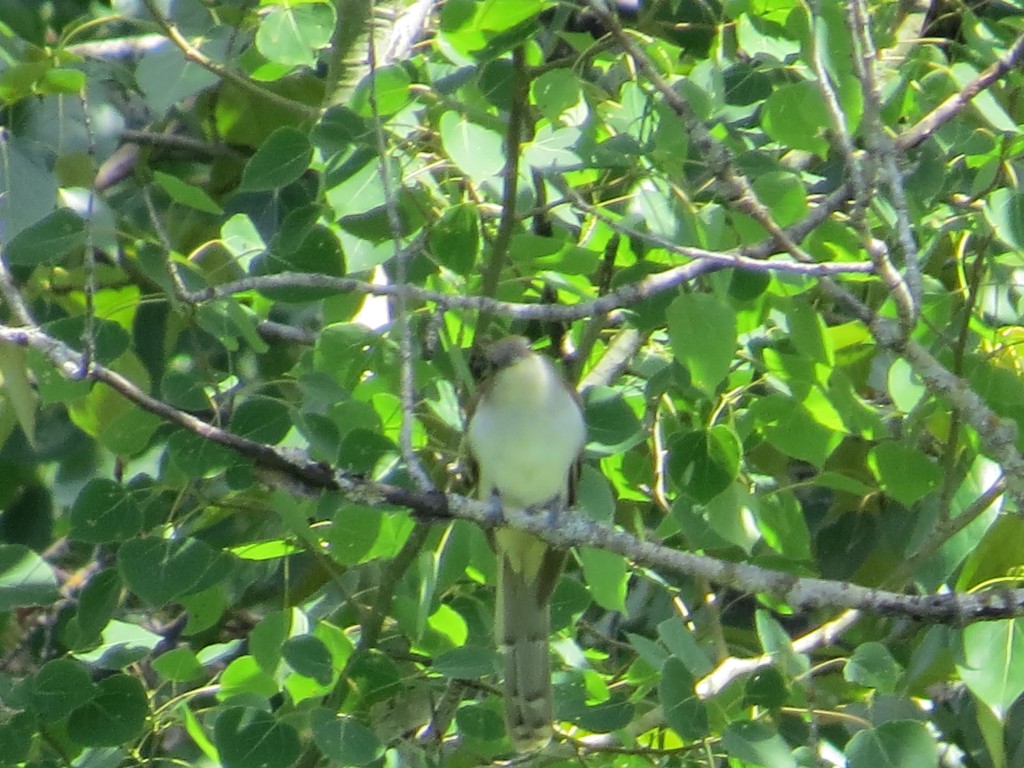
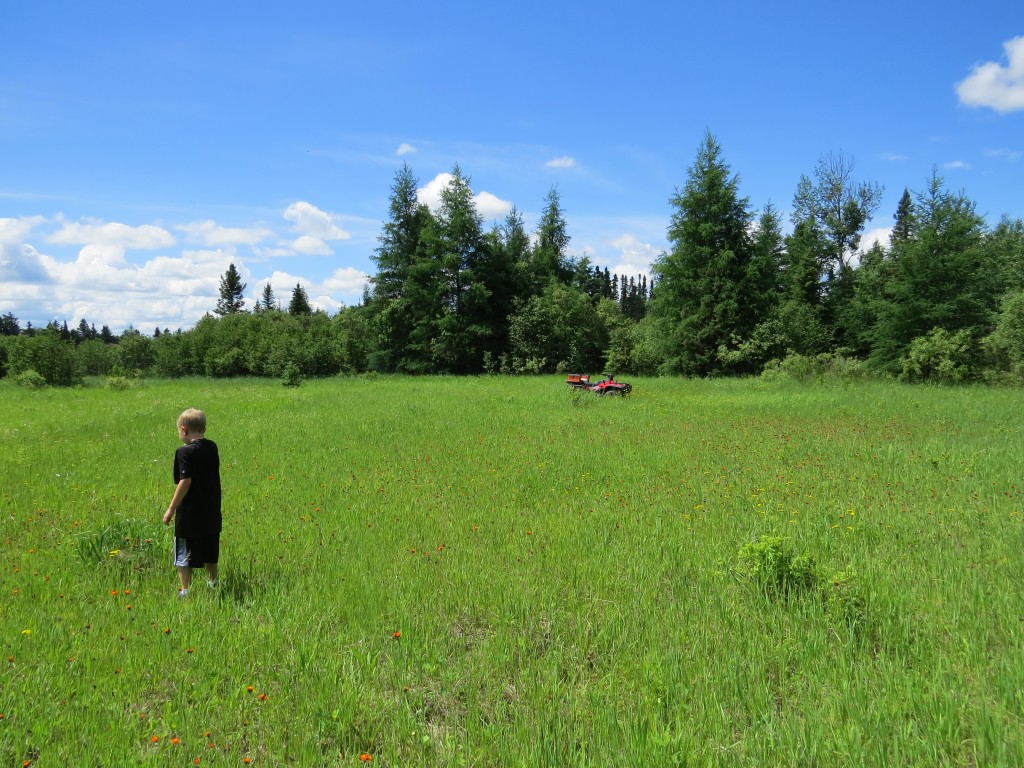 A good sighting like that made a beautiful day even more beautiful.
A good sighting like that made a beautiful day even more beautiful.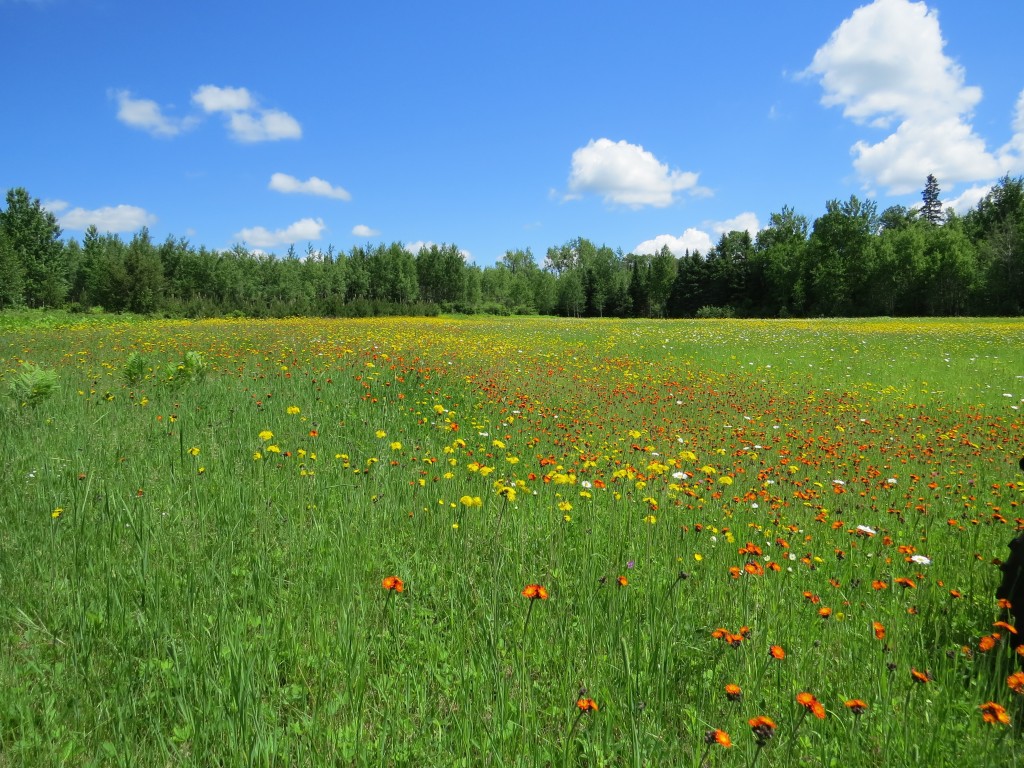
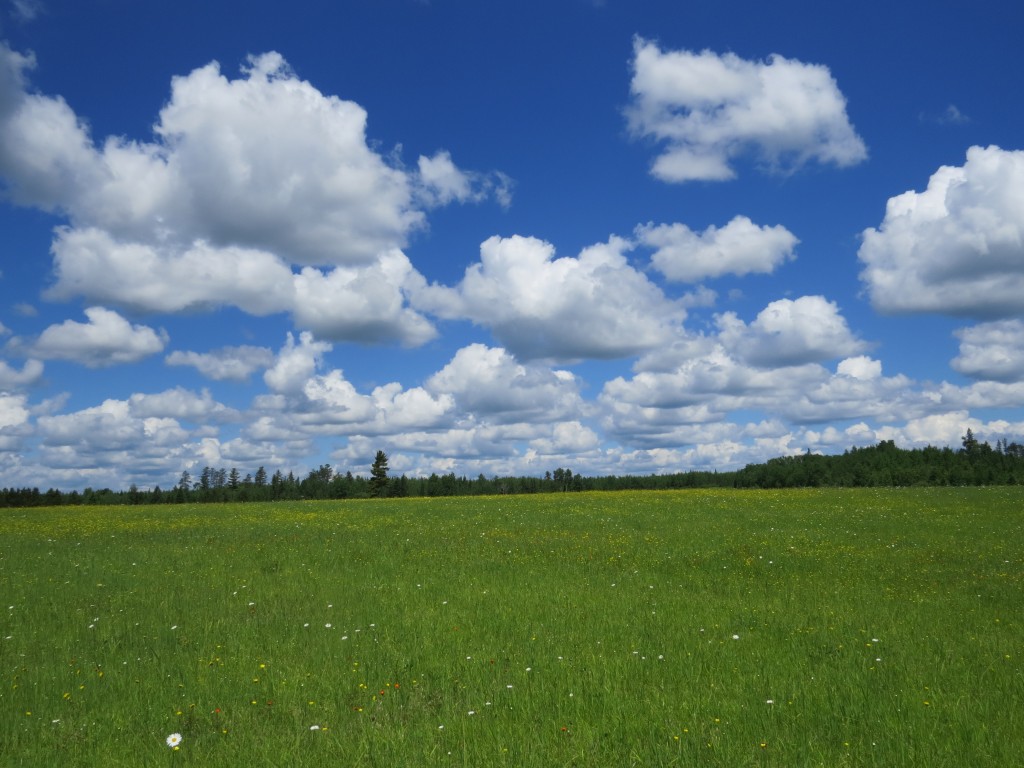
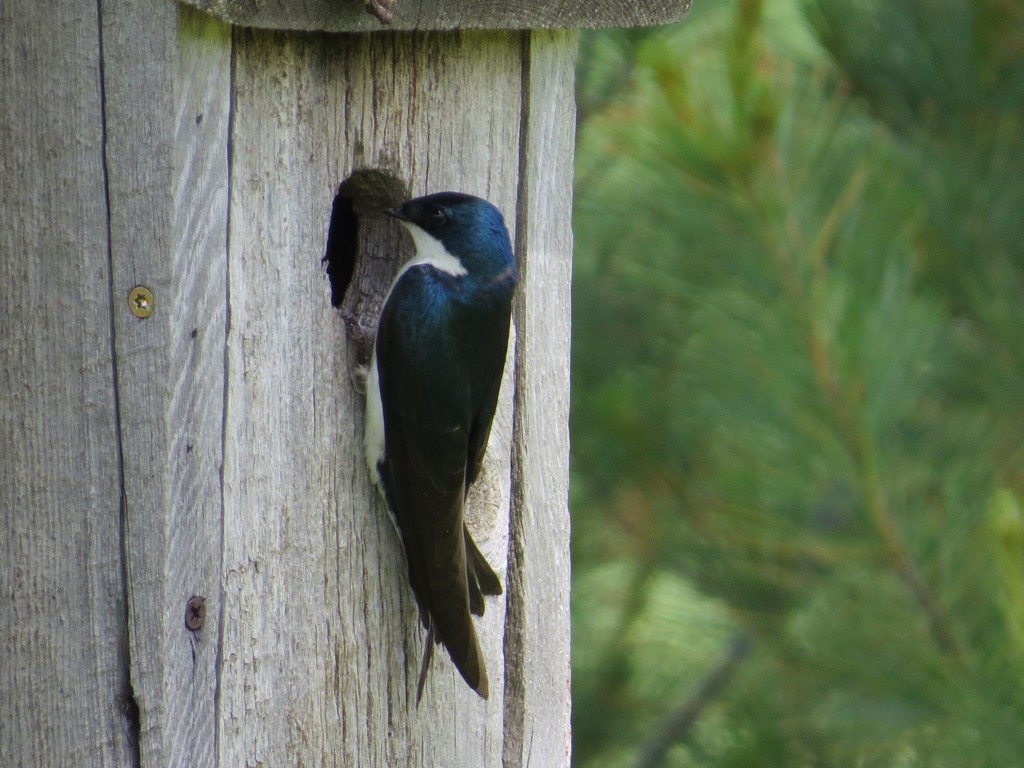
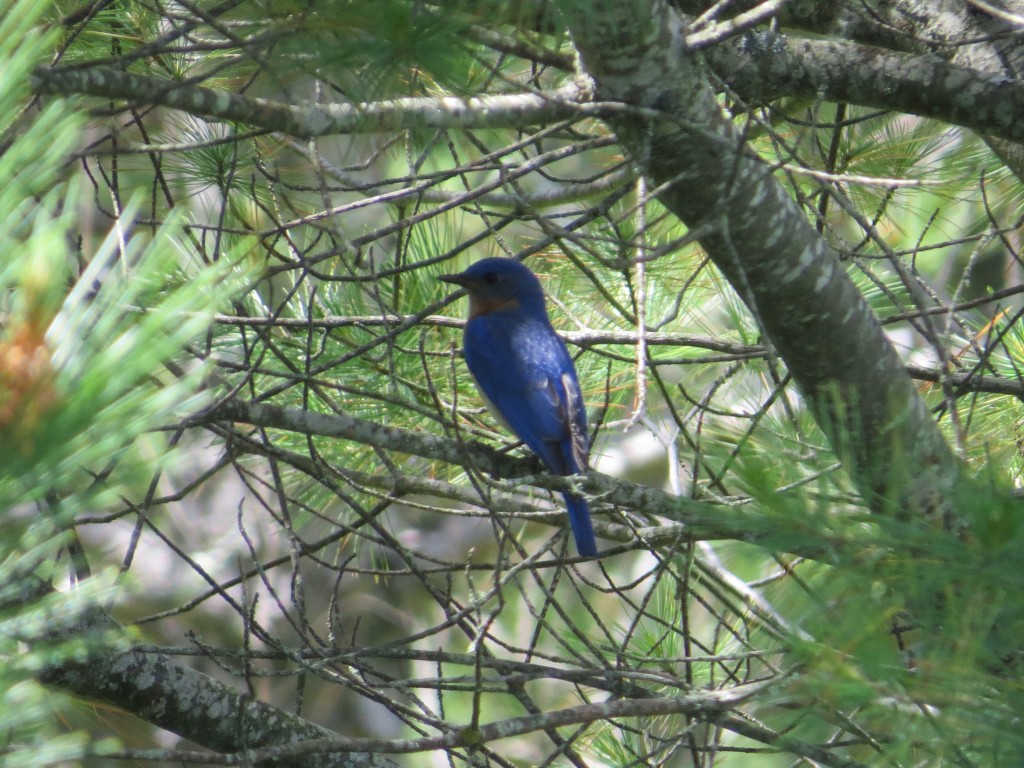
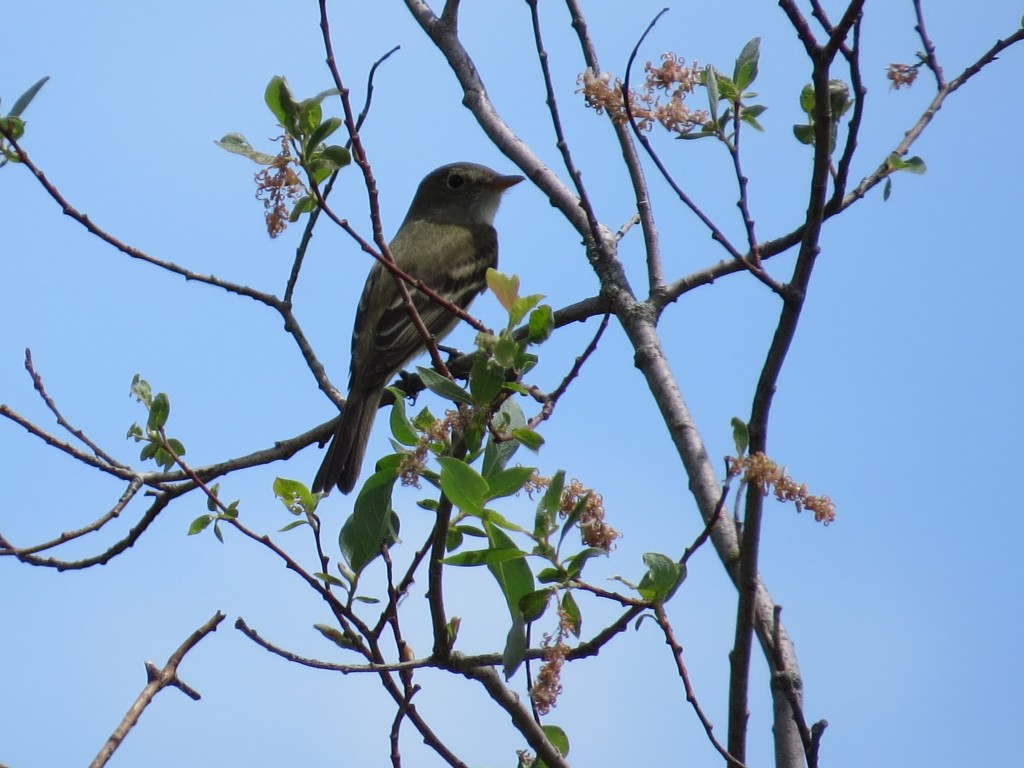
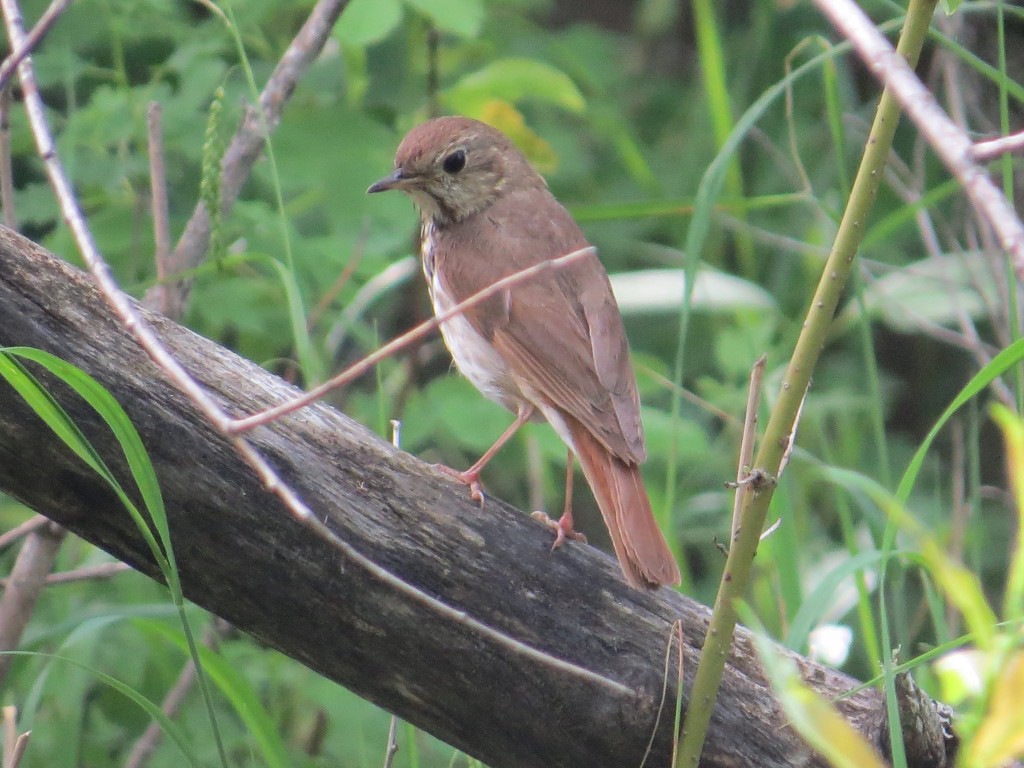
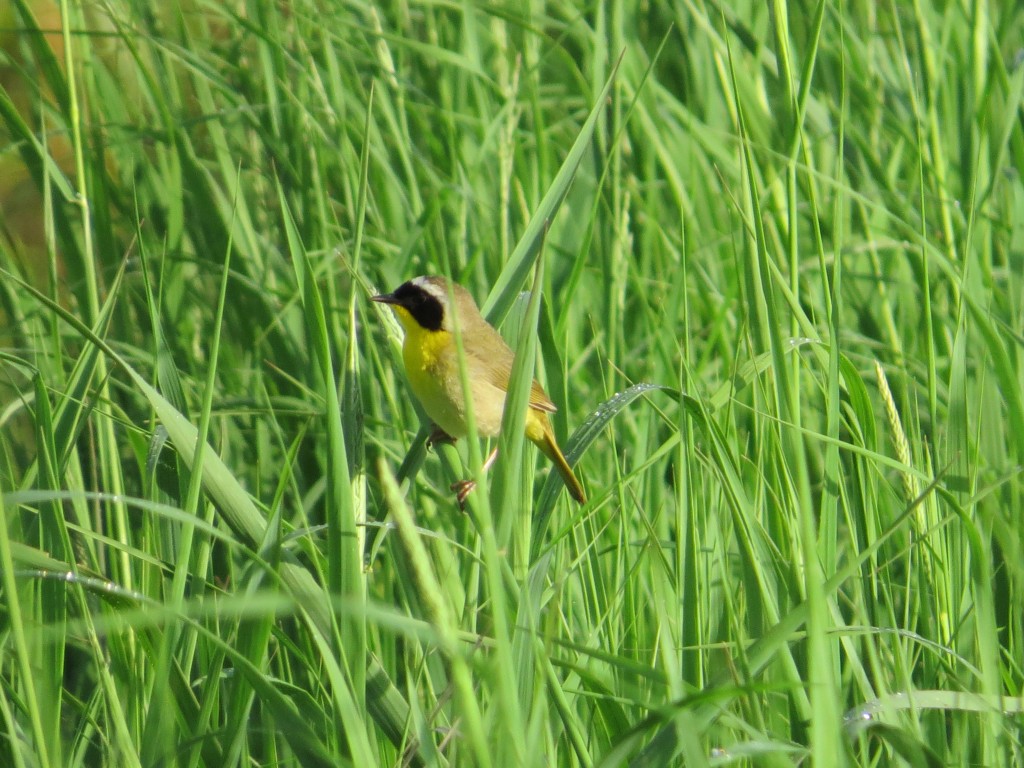
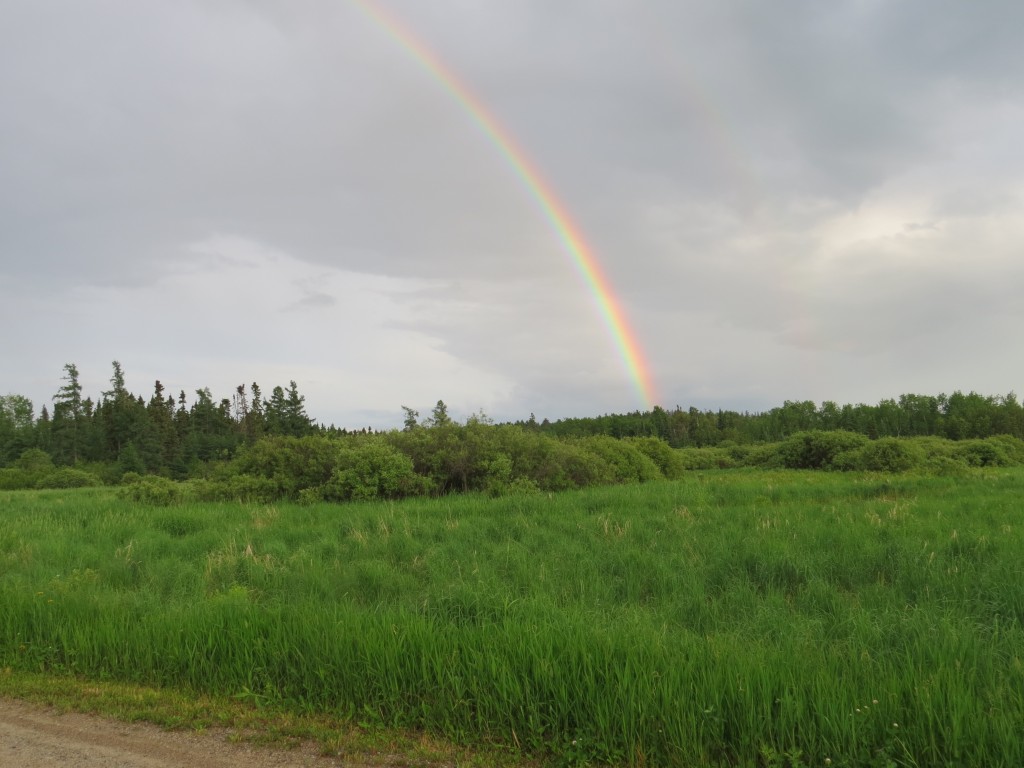 Not bad birding around the parents’ farm. I also sneaked away one morning on a quick solo mission to hike the Vermilion Gorge trail by Crane Lake on a tip from local birder, Dee Kuder, to look for Pine Warblers. Pine Warbler is a hole in my warbler life list, and I always forget about this drab warbler during migration and when I’m up north. It’s like that quiet kid in the classroom – always there but greatly overshadowed by the more gaudy and boisterous warbler children. Today was the day to look for the Pine. Evan declined my offer to go on this hike.
Not bad birding around the parents’ farm. I also sneaked away one morning on a quick solo mission to hike the Vermilion Gorge trail by Crane Lake on a tip from local birder, Dee Kuder, to look for Pine Warblers. Pine Warbler is a hole in my warbler life list, and I always forget about this drab warbler during migration and when I’m up north. It’s like that quiet kid in the classroom – always there but greatly overshadowed by the more gaudy and boisterous warbler children. Today was the day to look for the Pine. Evan declined my offer to go on this hike.